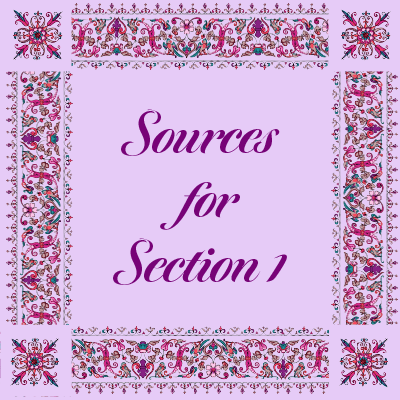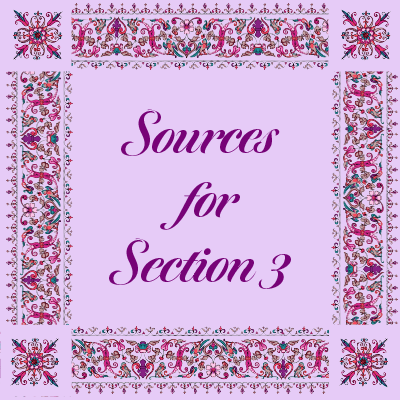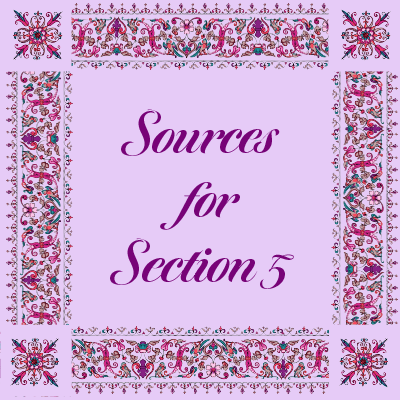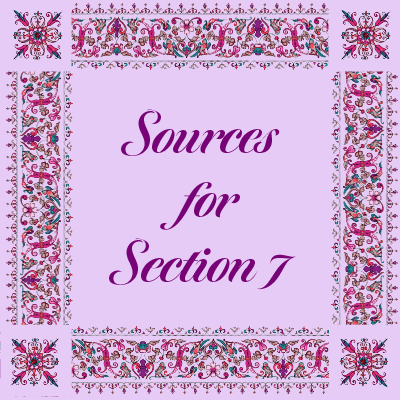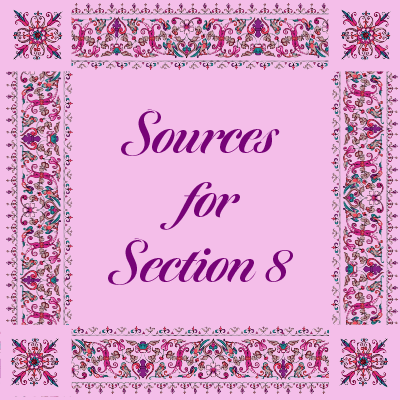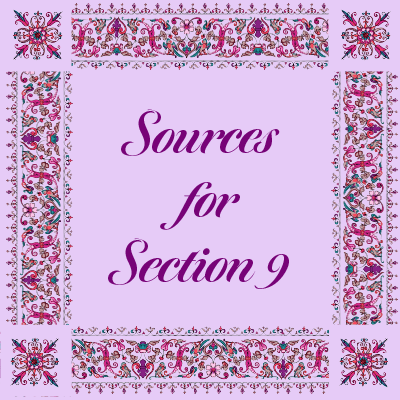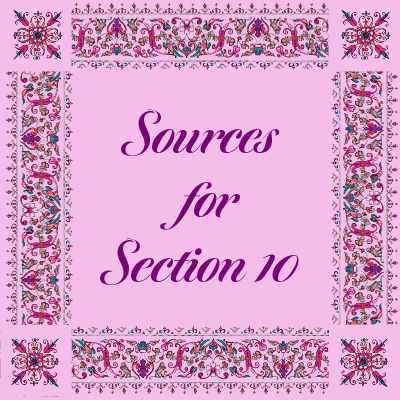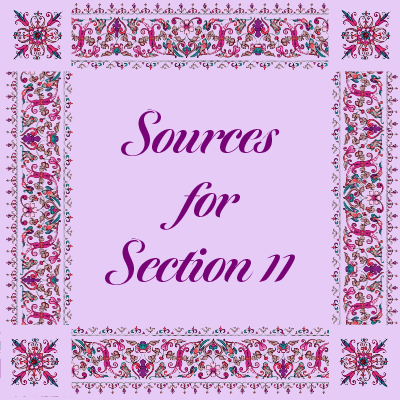
Written and illustrated by Violetta Zein
This part covers the life of the Greatest Holy Leaf from the age of 75 in 1921 to the age of 76 in 1922.
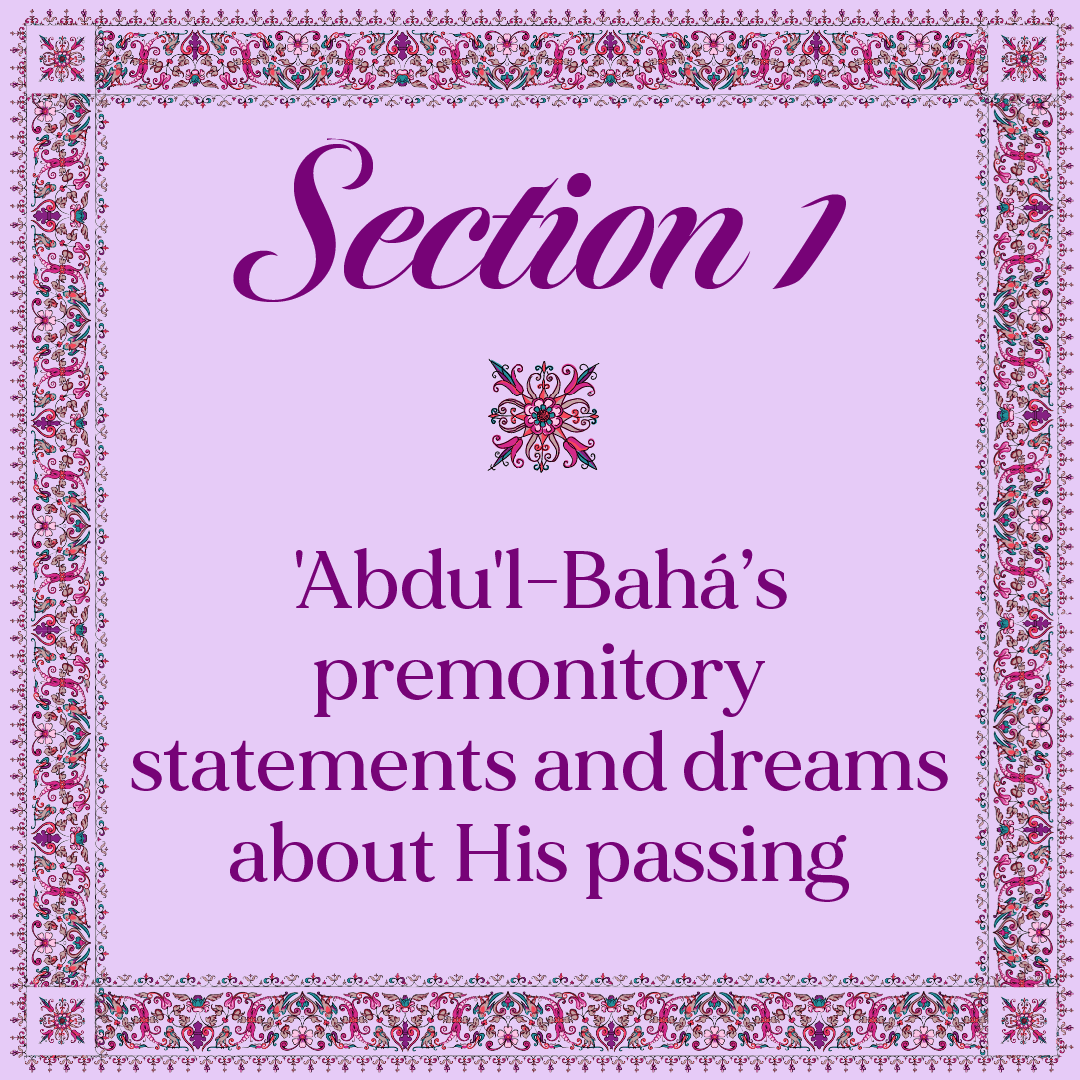

Collage of photographs of 'Abdu'l-Bahá shortly before His Ascension, showing the Master from a distance, in His gardens or walking away. Source: Violetta Zein, The Extraordinary Life of 'Abdu'l-Bahá: The illustrated chronology of the life of 'Abdu'l-Bahá Part 9: The Ascension of 'Abdu'l-Bahá.
For several years before His passing, and with increasing frequency as the end of His earthly life approached, ‘Abdu'l-Bahá made passing comments about His death, sometimes clear allusions, and at times more subtle references.
O ye My faithful loved ones! Should at any time afflicting events come to pass in the Holy Land, never feel disturbed or agitated. Fear not, neither grieve…
Remember, whether or not I be on earth, My presence will be with you always…
Friends, the time is coming when I shall be no longer with you…
My days are numbered, and save this there remains none other joy for me…
I have renounced the world and the people thereof…
I have now reached old age, failing in My powers…
No strength is there left in Me…
My work is now done upon this plane; it is time for me to pass on to the other world…
Recounting His premonitory dreams about His passing was one of the more subtlest ways 'Abdu'l-Bahá would speak about his passing, so subtle it raised absolutely no concern among the friends.
Around October 1921, 'Abdu'l-Bahá recounted a dream He had recently had:
I dreamed a dream, and behold, the Blessed Beauty (Bahá’u’lláh) came and said to Me:
Destroy this room.
'Abdu'l-Bahá was in such splendid health, no one around Him was alarmed at this dream.
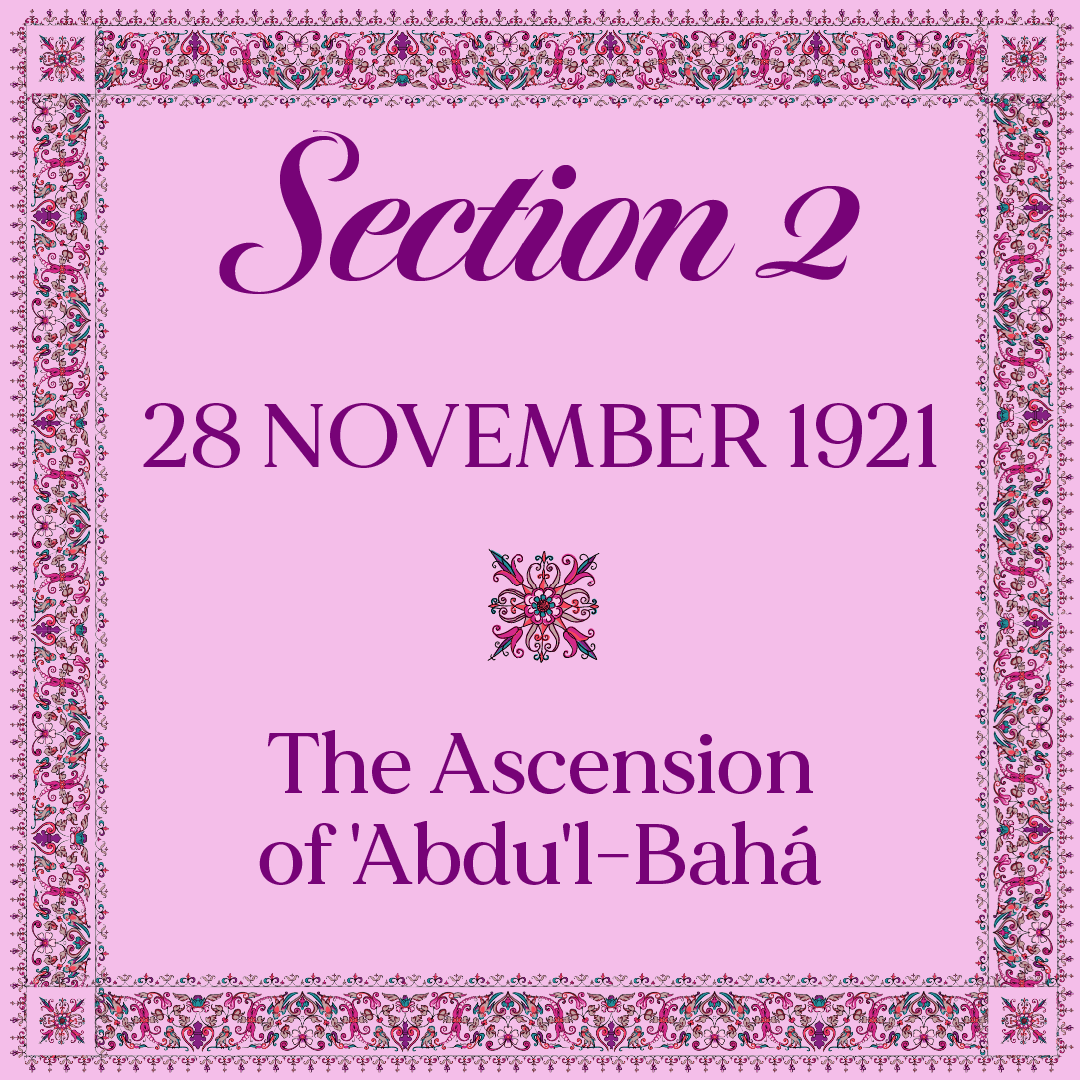
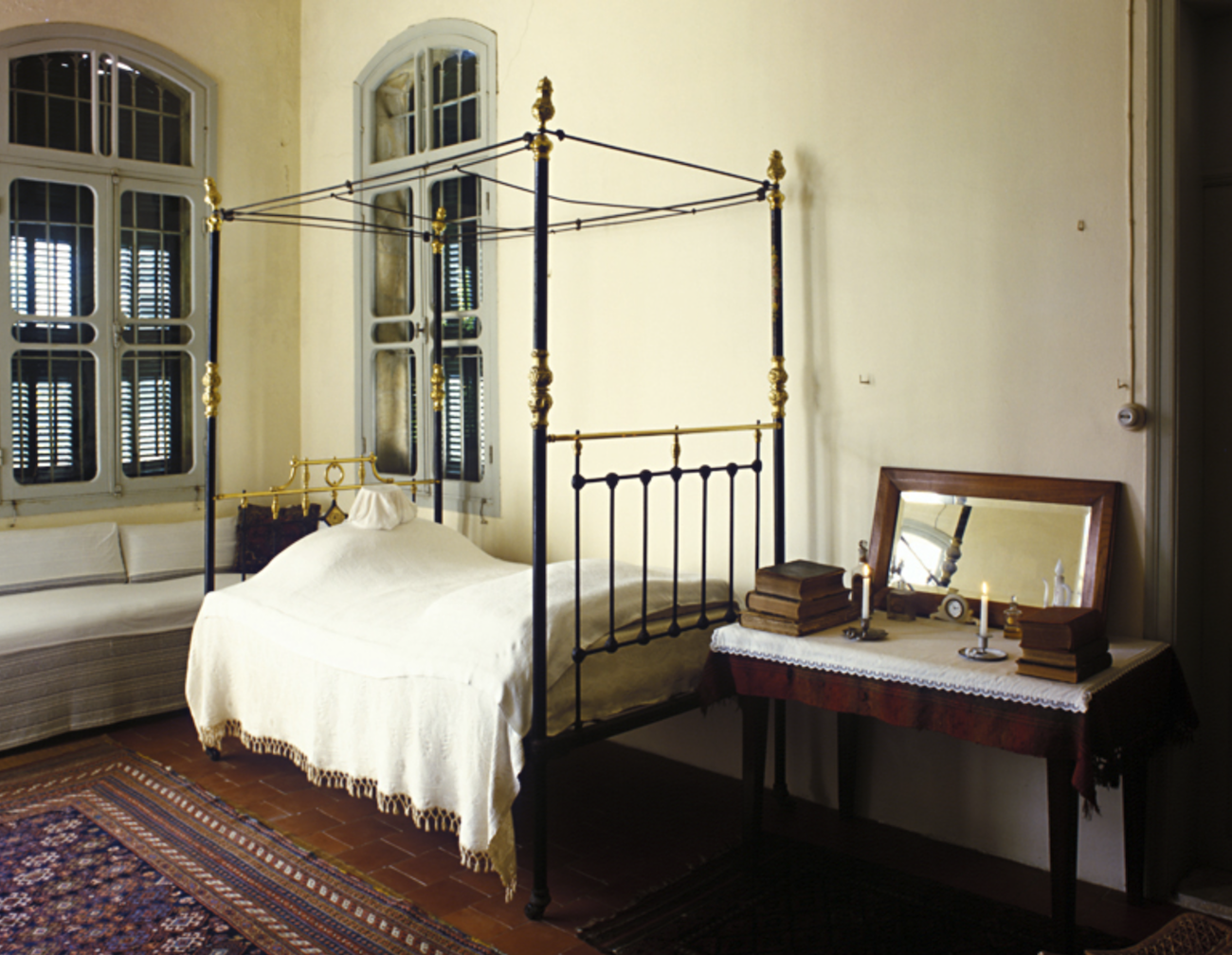
The bedroom of 'Abdu'l-Bahá in His house at 7 Haparsim in Haifa, where He passed away. Source: Baha'i Points of Interest.
On Saturday 26 November, 'Abdu'l-Bahá caught a fever which disappeared the next day, Sunday 27 November. The last visitor of the day was the head of the police, an Englishman, and 'Abdu'l-Bahá offered him a silk hand-woken handkerchiefs, then retired to bed at around 8:30 PM.
'Abdu'l-Bahá’s very last concern, five hours before His passing was for the friends: He asked about the health of every member of the Holy Family, all the pilgrims and the Bahá’í friends in Haifa, and when he was informed they were all in good health, the Master said:
Very good, very good.
Two of His daughters, Rúḥá and Munavvar Khánum, stayed with Him as 'Abdu'l-Bahá fell asleep very calmly, free of fever.
'Abdu'l-Bahá awoke at 1.15 AM on Monday 28 November 1921, rose from his bed, walked across His room to a table and drank some water. He was too warm and removed an out layer of clothing, and returned to bed, then asked His daughter, Rúḥá Khánum to lift up the mosquito net, telling her:
I have difficulty in breathing, give me more air.
'Abdu'l-Bahá drank a little, and when his daughters offered Him food, He responded in a clear voice, and giving them a beautiful look:
You wish me to take some food, and I am going?
Less than a minute later, 'Abdu'l-Bahá had passed away peacefully.
His face was so beautiful, so calm and serene that, for a moment, His daughters thought He had just simply fallen asleep.
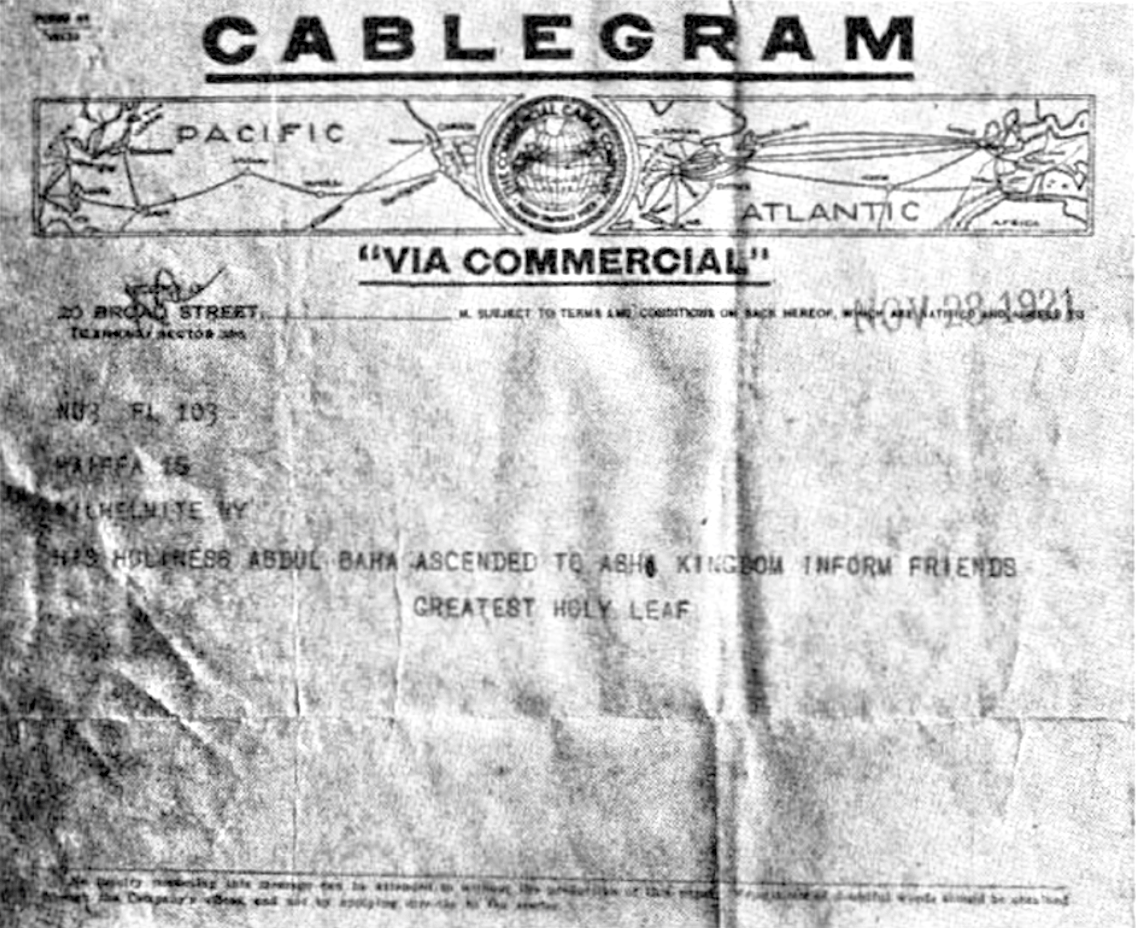
The cablegram sent by the Greatest Holy Leaf to the Bahá'ís of the world on 28 November 1921, reproduced in facsimile in Star of the West’s Special Ascension Edition, Volume 12, Number 15.
With 'Abdu'l-Bahá gone, everything now rested on the Greatest Holy Leaf’s shoulders.
Despite her own heartbreak and devastation, she was the Head of the Faith until Shoghi Effendi—the Guardian—arrived, and she had to make all the decisions as well as keep the Faith safe from the Covenant-breakers.
But the first thing Bahíyyih Khánum had to do was to draft a cable announcing 'Abdu'l-Bahá’s passing to the entire Bahá'í World.
The devastating 7-word cable every Bahá'í community in the West received from Bahíyyih Khánum, the Greatest Holy Leaf on 29 December 1921 simply read:
His Holiness 'Abdu'l-Bahá ascended to Abhá Kingdom.
This was the cable Shoghi Effendi saw in Major Tudor Pole’s office which caused him to faint.
The grandson of 'Abdu'l-Bahá, the Guardian of the Cause of Bahá'u'lláh, had just learned of the Master’s passing after most Bahá'ís, and in the exact same unceremonious manner.
By reading a cable.
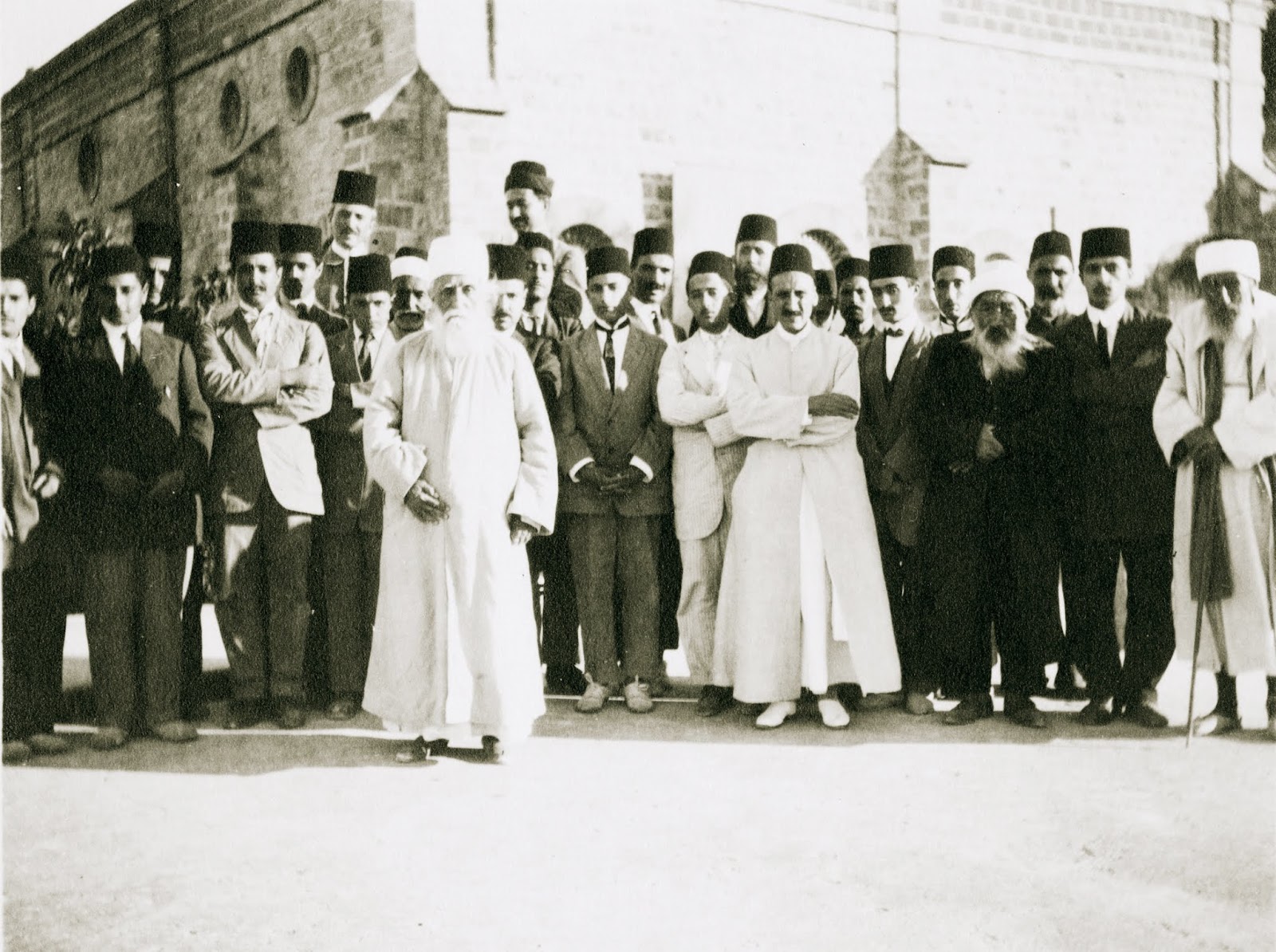
'Abdu'l-Bahá with some pilgrim and resident Bahá'ís in Haifa. Source: 'Abdu'l-Bahá in the Holy Land.
In the early morning of Monday 28 November, the local Bahá'ís were woken up with the shocking news of 'Abdu'l-Bahá’s Ascension.
Soon, after, gathered in the central hall of the house of the Master, apprehensive, some weeping, unsure what would happen to the leadership of the Faith.
Bahíyyih Khánum calmly went around comforting the grieving Bahá'ís, taking on their pain, touching a shoulder here, holding a hand here, moving from person to person, giving love, tenderness, compassion, when her own heart was broken.
Once again, the Greatest Holy Leaf was exhibiting the type of spiritual resilience and strength so similar in nature to that of 'Abdu'l-Bahá.
Bahíyyih Khánum was a tower of strength to the grief-stricken community. She was full of reassurance, confidently stating that the Faith would not suffer from the death of 'Abdu'l-Bahá.
The Bahá'í Faith was, at this perilous and confusing time of grief and loss, in the capable hands of the Greatest Holy Leaf, and local Bahá'í community and pilgrims, reeling with spiritual pain, rallied around her towering strength.
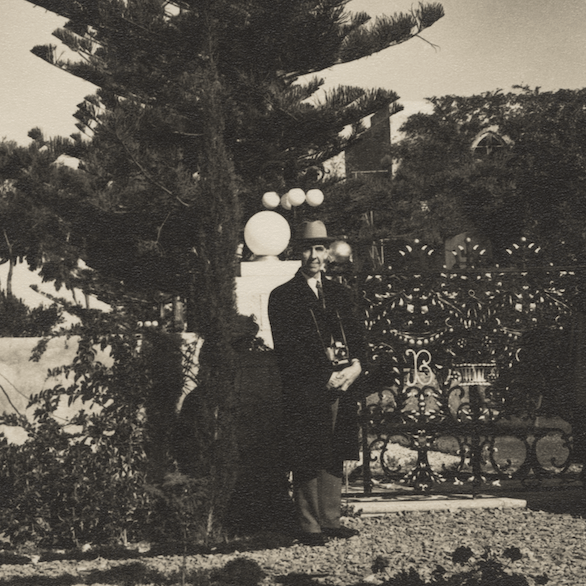
Curtis Kelsey with pilgrims at the Shrine of Bahá'u'lláh during his first pilgrimage. © United States National Bahá'í Archives, used with permission.
Curtis Kelsey was in Haifa at the time, an American Bahá'í come in the last months of 'Abdu'l-Bahá’s life to electrify the Shrines of Bahá'u'lláh and the Báb. During this gathering, Bahíyyih Khánum walked straight towards him and instructed him:
Kelsey, will you take Fujita and Khusraw to ‘Akká to tell the friends there of the Master’s passing and then come right back?
In the exact same way that the Greatest Holy Leaf had comforted the local Bahá'í community with her loving attention and empathy, she would comfort the worldwide Bahá'í community, from Persia to America.
But now, it was time for Bahíyyih Khánum to resolve the delicate question of where to inter the remains of the Center of the Covenant.
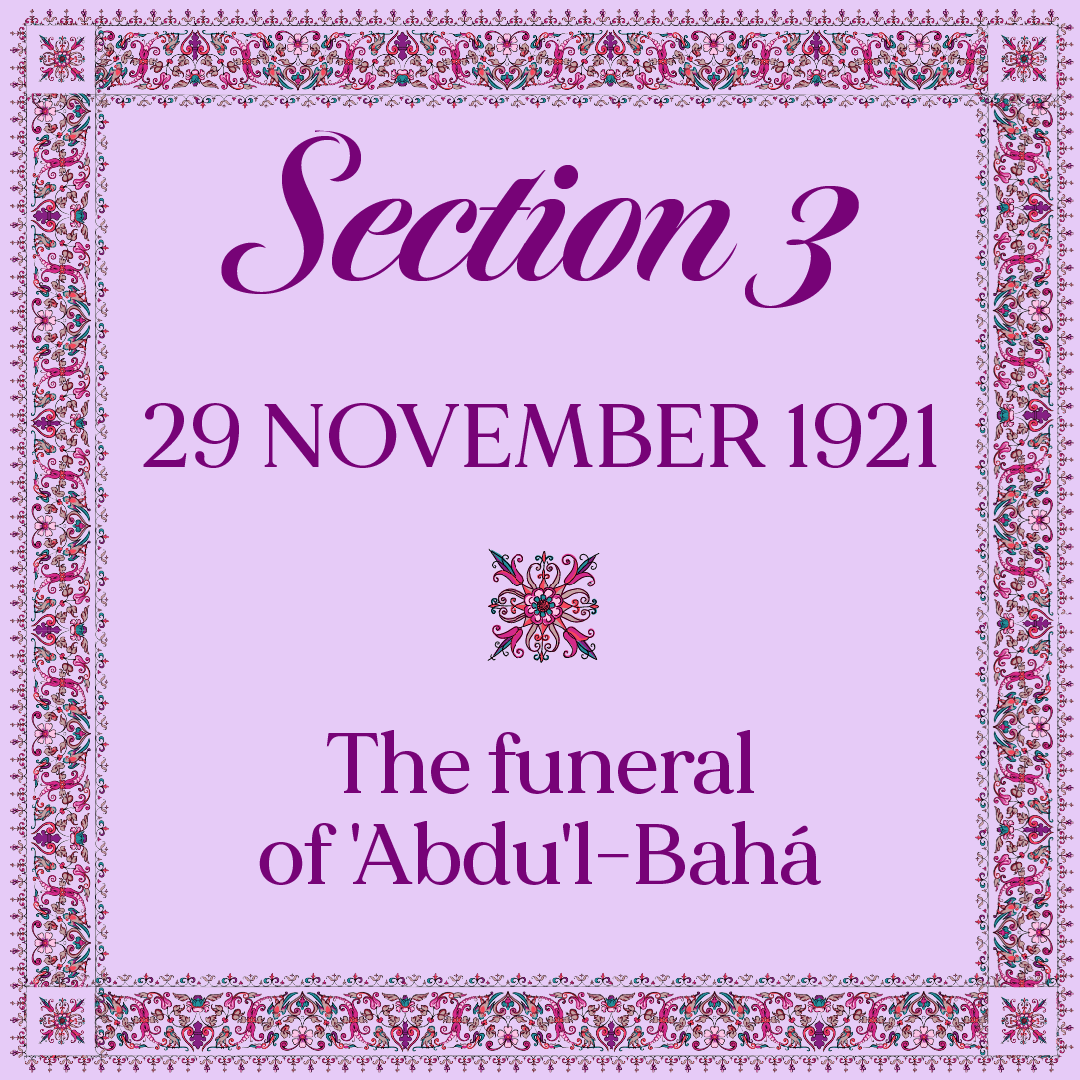

In the foreground on the left, Báb-i- Faḍl, the door to the Shrine of 'Abdu'l-Bahá next to the door leading to the Shrine of the Báb. The door of the original building was named by 'Abdu'l-Bahá Himself. Source: Bahá'í Media Bank, © Bahá'í International Community 2024.
When the Greatest Holy Leaf was looking for the most befitting place to inter 'Abdu'l-Bahá, ‘Abbás-Qulí, the custodian of the Shrine of the Báb approached her and told her a 12-year-old story, dating back to 21 March 1909, when he had been alone with 'Abdu'l-Bahá after the Master had finally interred the remains of the Báb in the vault beneath the Shrine.
After 'Abdu'l-Bahá had accomplishes His historic task, He stepped from the vault into a passageway, ordered the door to the vault with the sarcophagus containing the remains of the Báb to be closed, and told ‘Abbás-Qulí, pointing to the passageway leading to an empty vault immediately next to Báb’s:
And this should be a place for Us.
The Greatest Holy Leaf had found the place to inter her beloved saintly Brother. She told ‘Abbás-Qulí before blessing him for his help:
Very well. This is where it will be.
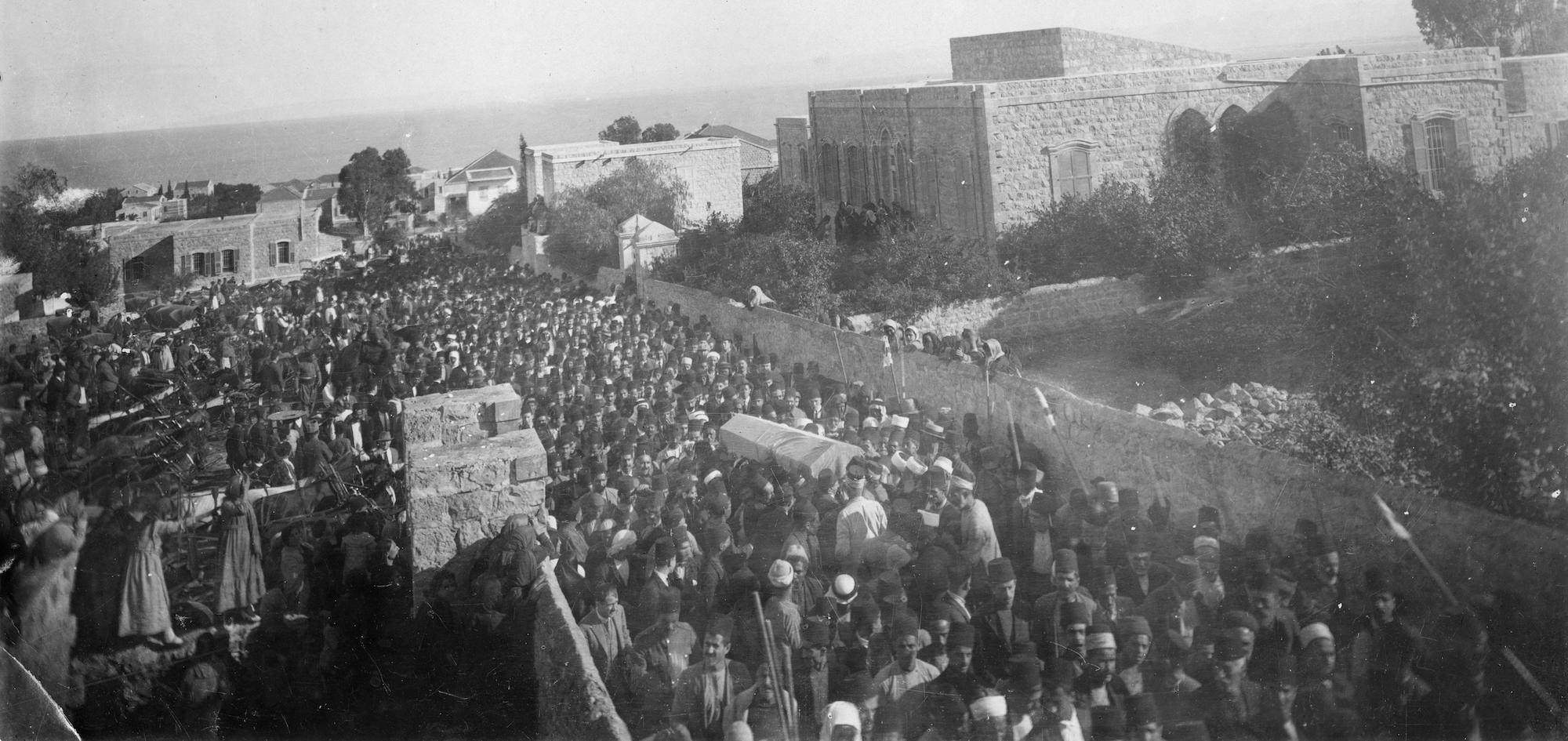
The funeral cortege of 'Abdu'l-Bahá, His casket carried aloft by pallbearers. Souce: © United States National Bahá'í Archives, used with permission.
By 7:00 AM on Tuesday 29 November, 1921, Haifa was at a virtual standstill.
The news of 'Abdu'l-Bahá's passing had shocked the city and its people, and soldiers lined both sides of Haparsim Street, some even stationed in the courtyard of the Master's house, standing guard.
The funeral procession towards the Shrine of the Báb began, and 8 Bahá'ís lifted the casket onto their shoulders, the pallbearers changing frequently because of the long distance to cover.
The funeral cortège was led by a guard of honor, courtesy of the City Constabulary Force, followed by Muslim and Christian Boy Scout troops, and behind them Muslim choristers chanting verses from the Qur'án, along with the Mufti of Haifa, Muslim leaders, and Christian clergymen of at least three denominations: Roman Catholic, Greek Orthodox, and Anglican.
Behind the coffin were the members of the Holy Family as well as eminent guests such as Sir Herbert Samuel, the British High Commissioner for Palestine, Sir Ronald Storrs, Civil Governor of Jerusalem and Judea, and Lieutenant Colonel Stewart Symes, the Governor of Phoenicia.
They were followed by the Haifa consuls of several countries along with Palestinian, Muslim, Jewish, Christian, Druze, Egyptian, Greek, Turk, Arab, Kurd, European, and American notables, themselves followed by thousands of mourners walking behind the funeral cortège to honour ‘Abdu'l-Bahá.
It took two hours for the funeral cortège to wind its way through Haifa streets mid-way up Mount Carmel to the Shrine of the Báb, a distance of about 1.5 kilometers (1 mile).
A public demonstration of respect of this magnitude, from all strata of Haifa and Palestine, was nothing short of astounding, and at the same time, the most befitting tribute for ‘Abdu'l-Bahá.
Sir Ronald Storrs, Governor of Jerusalem was deeply moved by the funeral and said:
I have never known a more united expression of regret and respect than was called forth by the utter simplicity of the ceremony.
After the funeral had ended, Raḥmatu’lláh Najaf-Ábádí, the caretaker of the Shrine of the Báb, was so physically strong that he was able to lower ‘Abdu'l-Bahá's casket single-handedly, without any trouble: he easily lifted the casket, and carried it down to the crypt by himself.
After the funeral, he remembered ‘Abdu'l-Bahá asking him a puzzling question before the Master passed away:
You are a strong man. Could you not carry me away to a place where I could rest? I'm tired of this world.
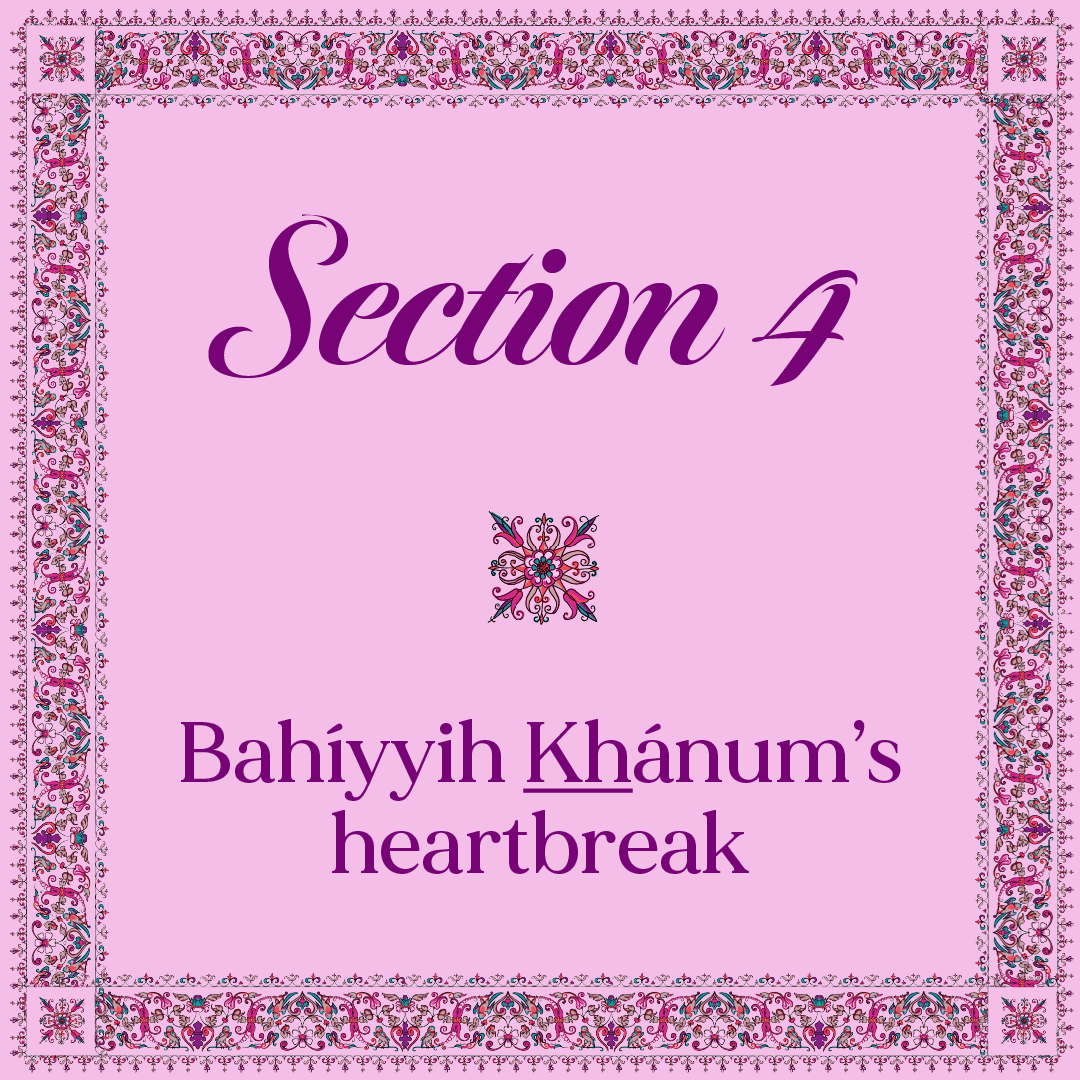
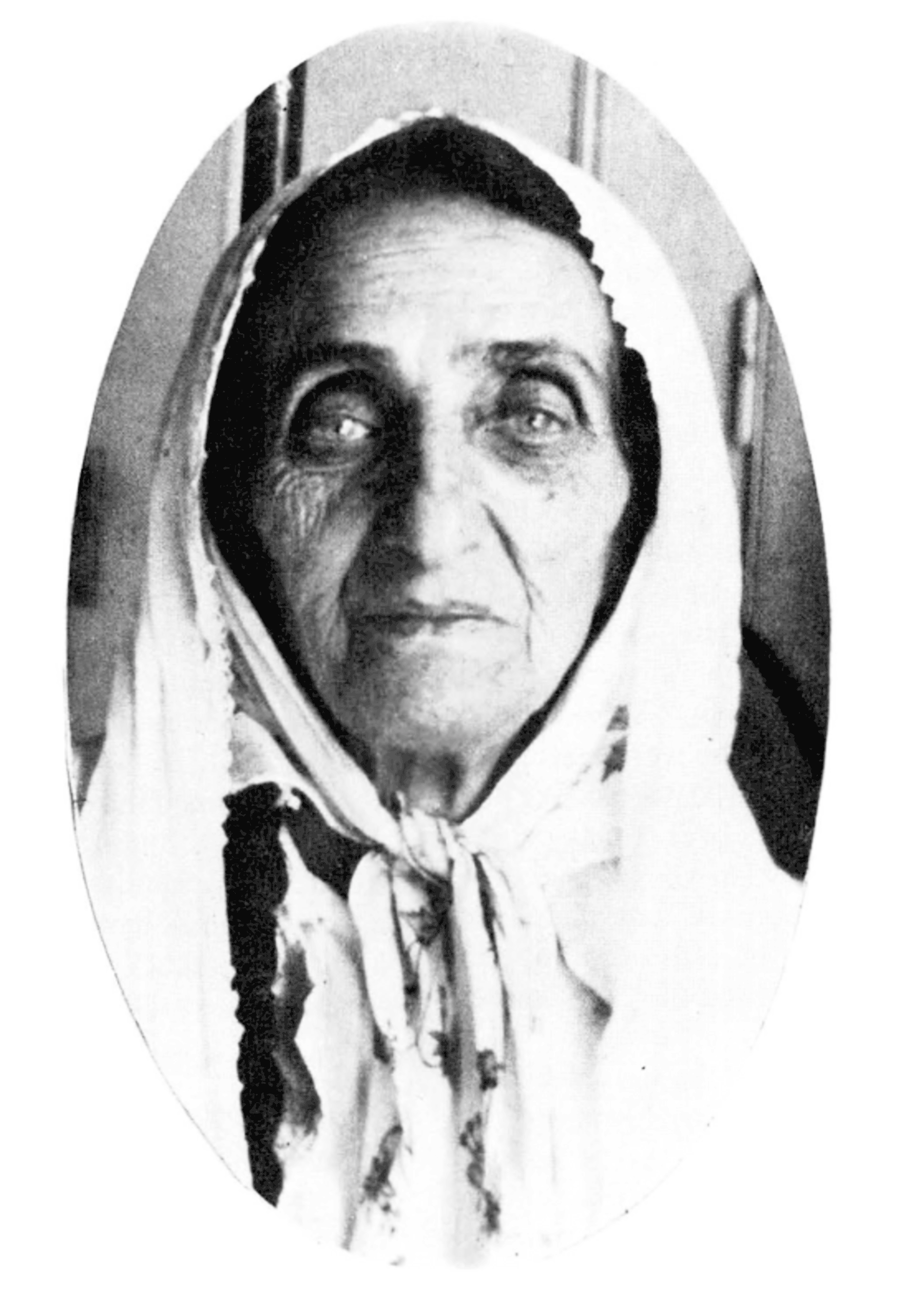
A portrait of the Greatest Holy Leaf taken around 1919. Source: Bahaimedia.
With the passing of 'Abdu'l-Bahá, the Greatest Holy Leaf became the “Remnant of Bahá,” and “the last survivor” of this “glorious and heroic age.”
She was, forevermore, the last direct link of the Bahá'í community to Bahá'u'lláh.
Bahíyyih Khánum was the only living member of Bahá’u’lláh’s immediate family who not only remained faithful to His Covenant, but also stood by ‘Abdu’l-Bahá through, firmly and steadfastly for the duration of his 29-year ministry.
It was only because He had the Greatest Holy Leaf, His deputy and vicegerent during His long absence from the Holy Land, that 'Abdu'l-Bahá was even able to contemplate leaving Haifa for such a long period of time.
‘Abdu’l-Bahá had relied on Bahíyyih Khánum.
Her sacrificial nature, her discretion as His confidant, His tireless helper, selfless support and utterly trustworthy ally, she became 'Abdu'l-Bahá’s right hand during His ministry.
She hosted increasing numbers of eastern and western pilgrims, and whenever they were separated, 'Abdu'l-Bahá always wrote expressing eagerness at seeing His sister again, always asking her to kiss Shoghi Effendi for Him.
She held firm in the face of increased Covenant-breaking activity during 'Abdu'l-Bahá’s Journeys to the West.
Shoghi Effendi described Bahíyyih Khánum, the Greatest Holy Leaf’s support to 'Abdu'l-Bahá, saying she was a “trusted supporter of the peerless Branch of Bahá’u’lláh, and a companion to Him beyond compare”, “His competent deputy”, “His representative and vicegerent, with none to equal her.”
It was Bahíyyih Khánum alone whom Bahá'í history would remember as having played a major part in the advancement and consolidation of the worldwide Bahá'í community, having kept the believers united at their time of greatest loss.
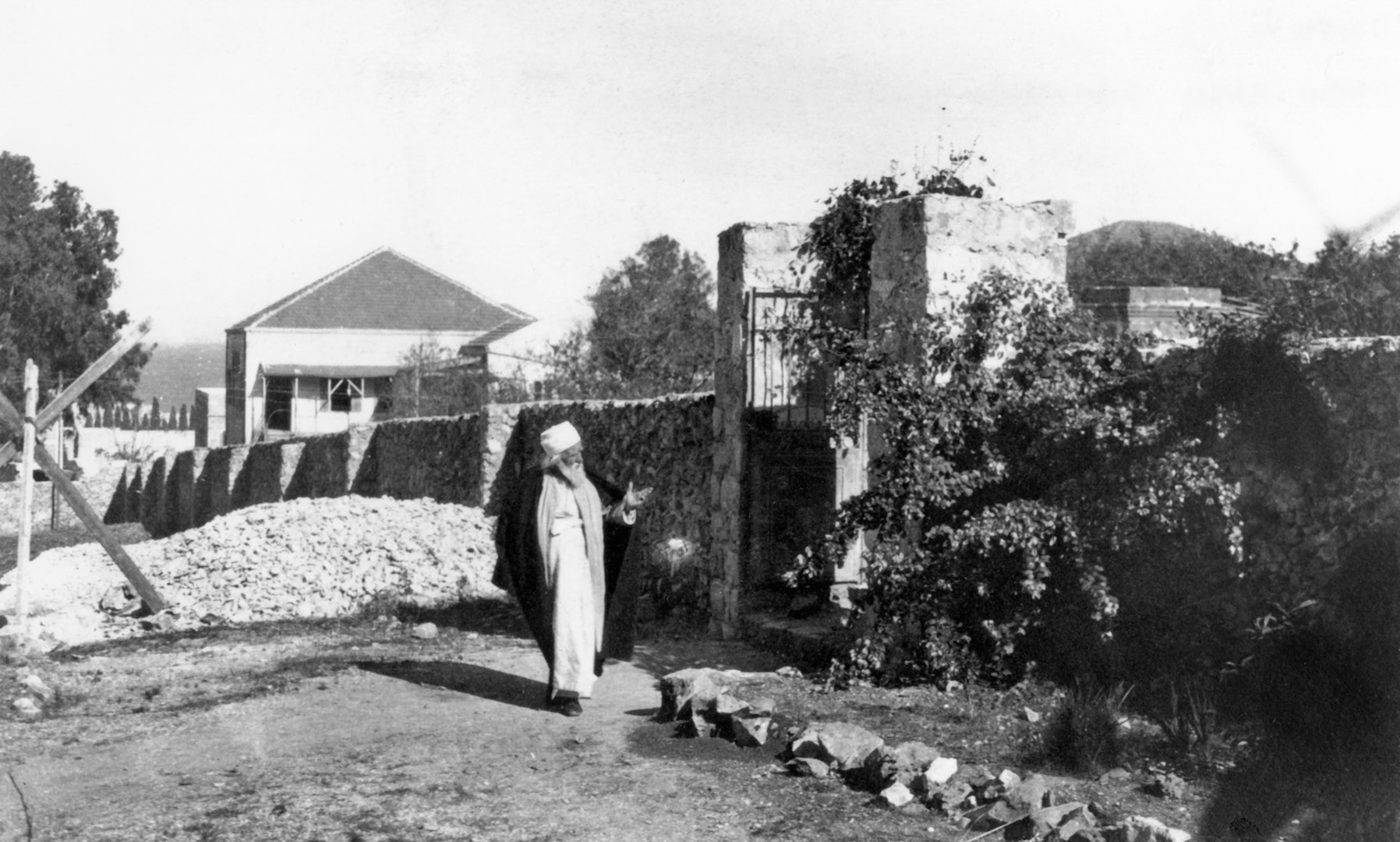
‘Abdu’l-Bahá walking outside 7 Haparsim Street in Haifa, c. 1919, where the mourners come and pay their respect during this week of mourning. Source: Bahá'í Media Bank, © 2024 Bahá'í International Community.
'Abdu'l-Bahá’s Ascension shattered the Greatest Holy Leaf’s heart.
They were two years apart, and Bahíyyih Khánum had spent nearly every day of her 75 years with 'Abdu'l-Bahá, apart from His several trips around the Holy Land, Lebanon, His journeys to the west and her own travels around the Holy Land, Lebanon, and Egypt.
The Greatest Holy Leaf had lived her entire life in the same home as 'Abdu'l-Bahá.
And now, the light of her life, the Center of the Covenant was gone.
Bahíyyih Khánum was frail by this point in her life, after 7 decades of physical deprivations, imprisonment, poverty, difficult living conditions, four exiles, losing her father, Bahá'u'lláh, her mother Ásíyih Khánum and all four of her brothers.
'Abdu'l-Bahá had been in spectacular health in the months prior to His passing, and He had been planning another long and ambitious teaching journey to Asia, America, and Europe.
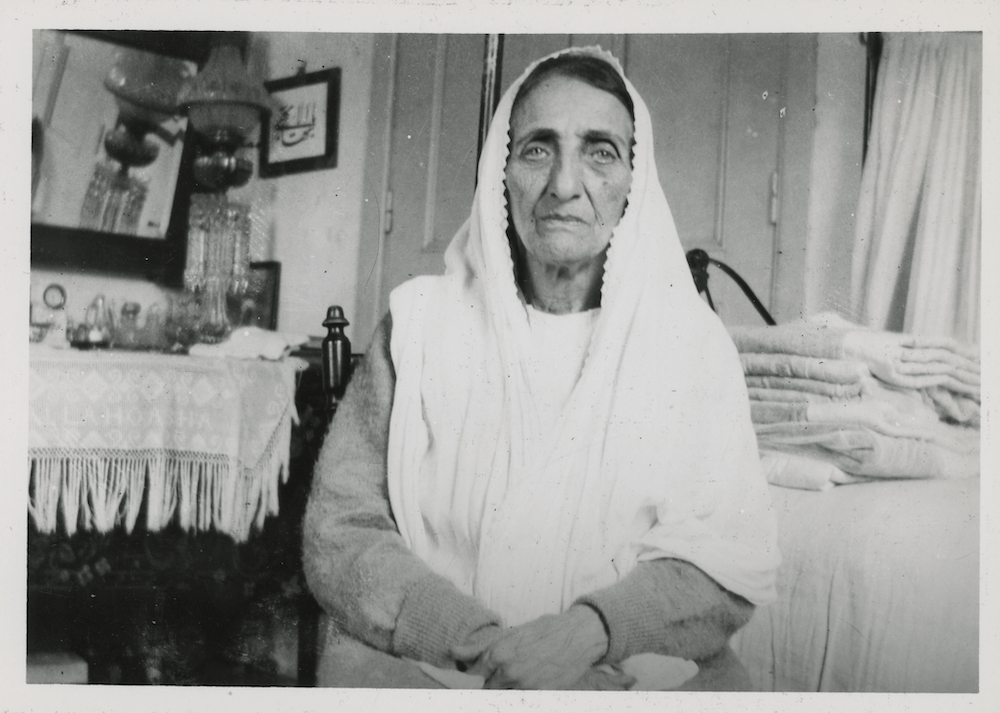
The Greatest Holy Leaf in Haifa. © United States National Bahá'í Archives, used with permission.
His Ascension, even though He was 77, was a tragic and sudden devastation for Bahíyyih Khánum, the shock of which she never truly recovered from.
'Abdu'l-Bahá had been Bahíyyih Khánum’s lifelong refuge, she had, since early childhood, placed her trust and her reliance on her older Brother, and He had been her sole comfort in moments of crisis, grief, loss, and betrayals.
In a letter she wrote on 12 September 1922, Bahíyyih Khánum describes in heartbreaking detail how the Ascension of 'Abdu'l-Bahá affected her life:
This was the most ruinous of disasters, the most dreaded of ordeals, the most hurtful of misfortunes.
It was an earthquake that shook the pillars of the world; it caused a tumult and an uproar among the dwellers of earth and heaven.
This terrible separation came upon us as an inescapable trial and a dismal decree. It destroyed all hopes of happiness, and all joy perished.
By this departure, the sparkling stars were dimmed, and the heavens of mystic meaning split apart.
It set the skies on fire, it scorched the seven spheres.
From this departure, sorrow enveloped all mankind, it brought pain and tears to all the peoples of the earth.
The lightning bolt of it consumed the world and struck the hearts of its inhabitants, so that they put on sackcloth and poured ashes on their heads.
This disaster, coming all unawares, made the morning dark, and turned bright noon to night.
From our breasts rose burning sighs, and from our eyes streamed our life blood.
Even the Concourse on High moaned and lamented, and their clamour rose to the highest Heaven, and the weeping denizens of the pavilions of glory, striking at their faces, raised their plaintive cries.
Mourning, shedding tears, their garments rent, their heads uncovered, their feet bare, the Maids of Heaven hastened out of their lofty, immaculate chambers, and groaned and cried out.
Despite her advanced age, her frailty, her personal grief, and her quiet modesty, the Greatest Holy Leaf arose to play a crucial role during this extremely difficult and dangerous period.
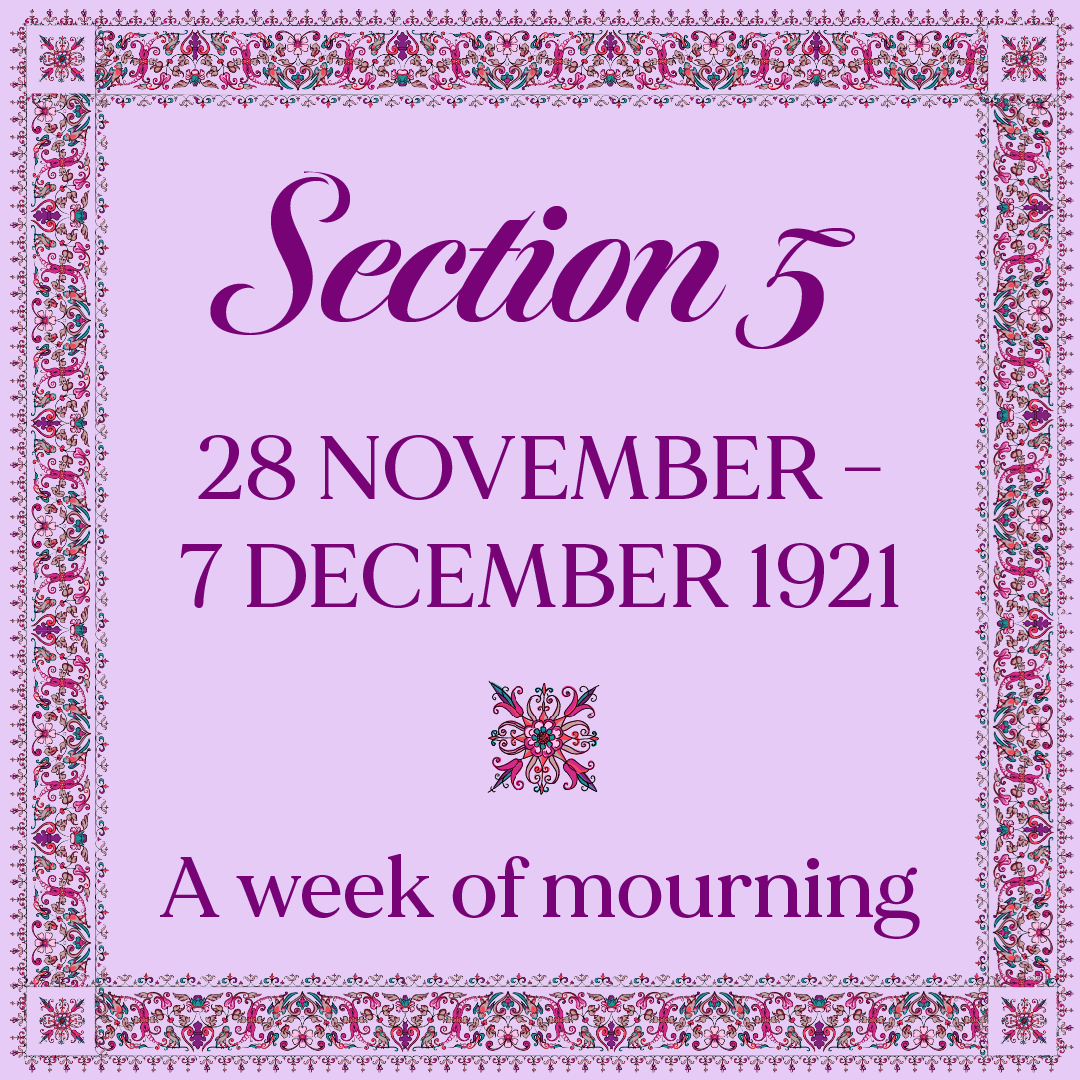
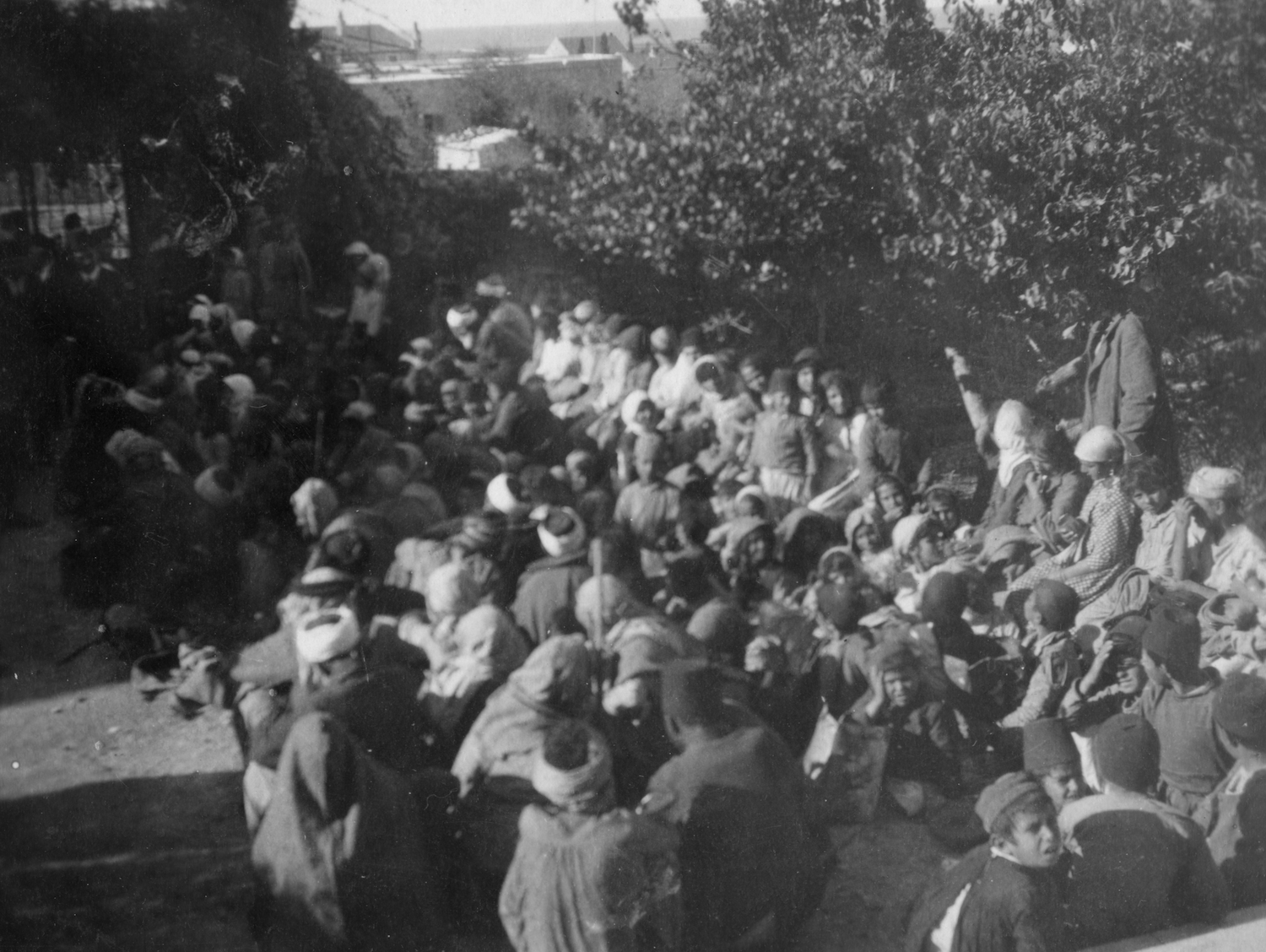
Bahá'í friends getting ready to give corn and wheat to the multitudes of the poor on the seventh day after the Ascension, after the week of mourning, December 5, 1921. Photograph taken by Lotfullah Hakim, courtesy of the National Bahá'í Archives of the United States.
It was the local custom in the Holy Land at the time to pay visits from morning to evening to the women of the deceased’s household, and the custom dictated that the more honored the deceased, the longer and louder the weeping and wailing of the mourners.
The Greatest Holy Leaf, Munírih Khánum, ‘Abdu'l-Bahá's widow, and her four daughters, Ḍíyá‘íyyih Khánum, Ṭúbá Khánum, Rúḥá Khánum and Munavvar Khánum, despite their intense grief, not only received these crying throngs of Syrian, Turkish and Arab women, brokenhearted friends of 'Abdu'l-Bahá, but they also spoke to them and comforted them, let themselves be embraced, and kissed.
At times, however, Bahíyyih Khánum and the women could take some time to walk up to the Shrine of 'Abdu'l-Bahá.
John Bosch, an American pilgrim who was in Haifa before, during, and after the Ascension of 'Abdu'l-Bahá, was walking up Mount Carmel when he saw, ahead of him, a veiled woman who looked to be walking slowly and painfully.
He went forward instinctively and took the woman’s left arm, helping her up a steep part of the mountain, when the women suddenly swung her veil back, looked deeply into his eyes, and he saw the luminous face of Bahíyyih Khánum.
John Bosch had a startling experience looking back at the Greatest Holy Leaf:
I looked back into the most beautiful blue eyes. Like an angel’s. It’s very hard to express or define the looks of an angel. I really thought she was a young woman.
When John Bosch had returned to the Western Pilgrim House, one of the Persian ladies came by to convey to him the Greatest Holy Leaf’s deep appreciation for his assistance.
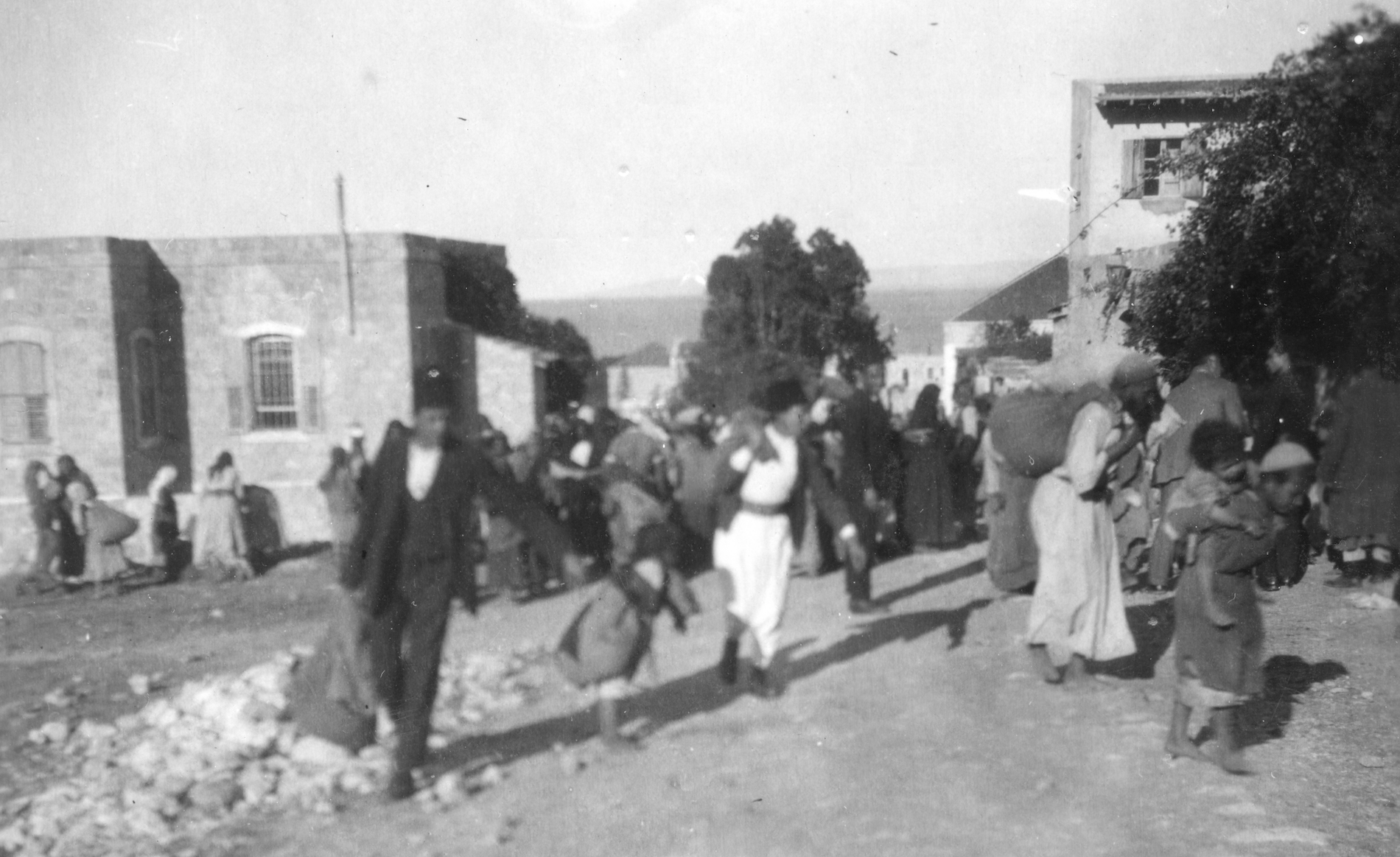
The poor, leaving ‘Abdu'l-Bahá's house, loaded with bags of wheat, on the seventh day after the Ascension, after the week of mourning, December 5, 1921. Photograph taken by Lotfullah Hakim, courtesy of the National Bahá'í Archives of the United States.
In 1892, the week following the passing of Bahá'u'lláh had been an intense period of mourning for the people of 'Akká.
Now, 29 years later, the week following ‘Abdu'l-Bahá's funeral was also a period of deep mourning. In the seven days following the passing of ‘Abdu'l-Bahá, between 50 and 100 of the poor of Haifa came to His home to pay their respects, many staying overnight, and were welcomed, received, and fed by the Greatest Holy Leaf and the Holy Family.
This took place in the very same spot where it had been the custom of ‘Abdu'l-Bahá, the "Father of the Poor," to give alms to the needy and the destitute. The grief of Haifa's poor at losing their beloved ‘Abdu'l-Bahá was heart-wrenching to eyewitnesses of the time.
Louise Bosch, an American pilgrim remembers that they all "wept bitterly."
On the seventh day after ‘Abdu'l-Bahá's passing, 5 December 1921, corn and wheat were distributed in His memory to about 1,000 of the poor of Haifa, irrespective of creed or race.
The poor left the house of the Master bent under the weight of heavy bags of wheat and corn.
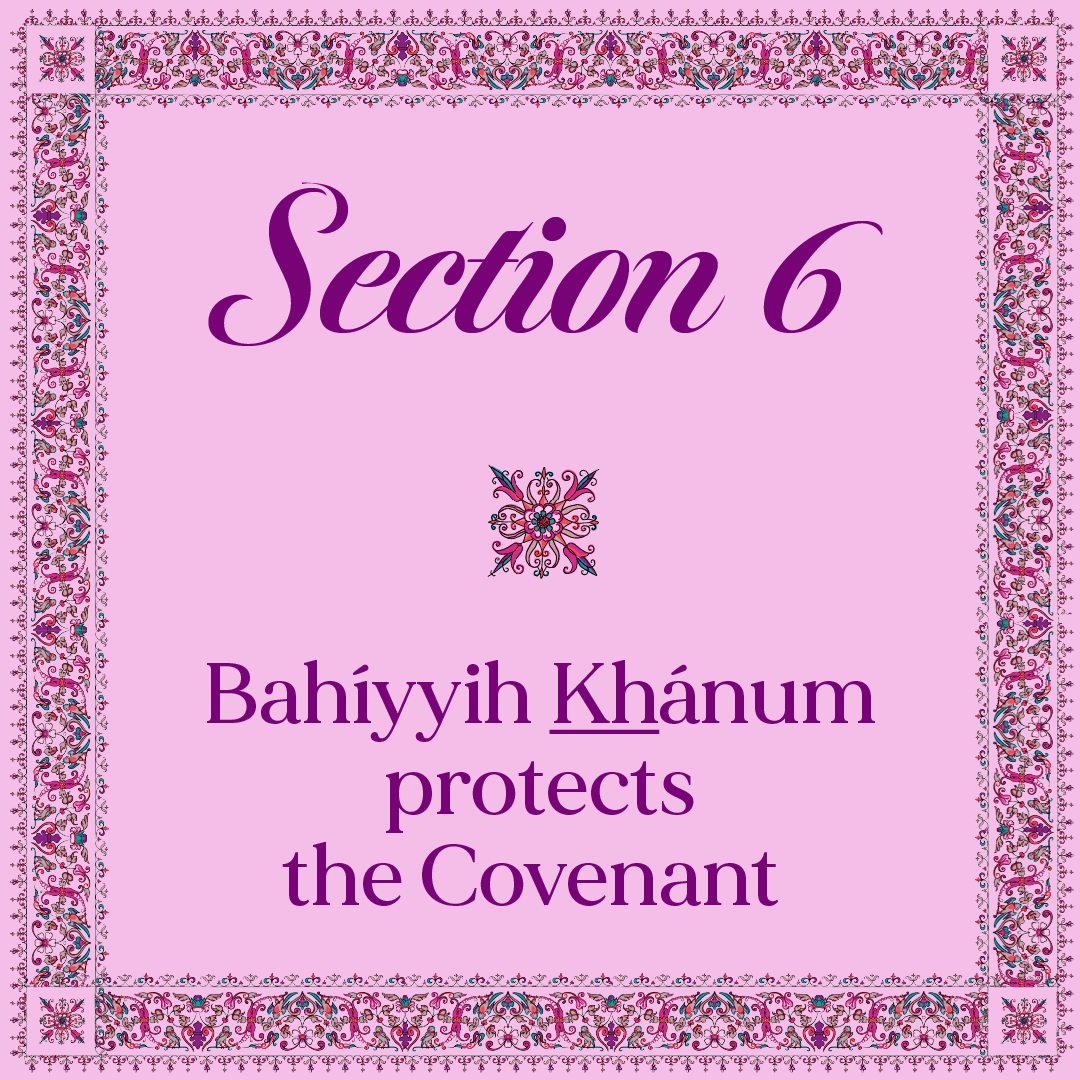

Closeup of a previously posted photograph of the Greatest Holy Leaf in Haifa. Photograph taken as part of a series of portraits in November 1900. © United States National Bahá'í Archives, used with permission.
The Ascension of 'Abdu'l-Bahá was tragic in its suddenness, and dealt Bahíyyih Khánum a blow so severe, she never completely recovered from the tremendous shock.
'Abdu'l-Bahá was her older Brother, she called him Áqá (Master), her whole life, and for 75 years, she had unfailingly turned to Him for guidance, she had placed her sole reliance on Him, and He had been a constant refuge in times of adversity. To her He, Whom she called Aqa', had been a refuge in times of adversity.
'Abdu'l-Bahá had been everything to Bahíyyih Khánum. He had been her whole life.
'Abdu'l-Bahá had sustained Bahíyyih Khánum for decades, He had consoled her in her devastating losses—the loss of all her baby brothers, the loss of Mírzá Mihdí, the loss of her cherished mother Ásíyih Khánum, the loss of her beloved uncle Mírzá Músá, the loss of her adored Father Bahá'u'lláh.
Perhaps even more importantly, it had been 'Abdu'l-Bahá’s healing presence that had comforted the Greatest Holy Leaf time and time again when Bahá'ís broke the Covenant, and when she suffered thanklessness and ungratefulness by both friends and family.
Bahíyyih Khánum had, for the second time after Bahá'u'lláh, lost the center of her entire life.
The fact that she not only survived the Ascension of 'Abdu'l-Bahá, but also found it within herself to guide the entire Bahá'í community through this indescribable tragedy is a testament to her iron-clad strength, despite a frail body and a lifetime of suffering, imprisonment and deprivations.
After the passing of 'Abdu'l-Bahá, Bahíyyih Khánum was the only member of the Holy Family with undisputed authority. She was the one the entire Baha'i world knew as the Greatest Holy Leaf.
She was the one who had served as 'Abdu'l-Bahá’s deputy and vicegerent during His journeys to the west, and the eyes of the worldwide community of faithful Bahá'ís were riveted on her.
The entire Bahá'í community looked to Bahíyyih Khánum to guide their steps and tell them what to do.
The history of the Bahá'í Faith will forever bear witness to Bahíyyih Khánum’s pivotal, role in the advancement and consolidation of the worldwide Bahá'í community which the hand of 'Abdu'l-Baha had fashioned in the weeks and years after His Ascension.
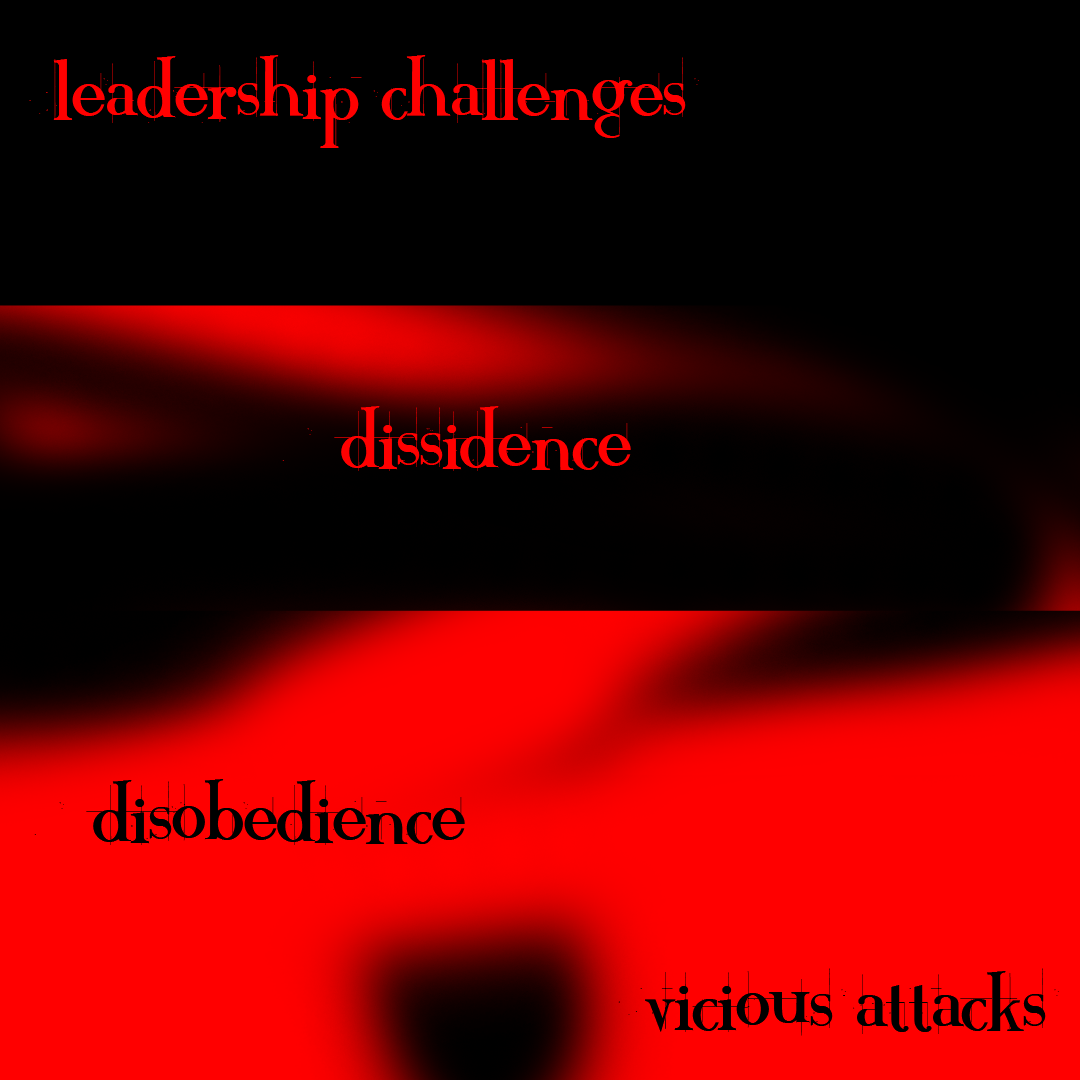
Dr. Moojan Momen isolates four types of Covenant-breaking in the Bahá'í Faith: Leadership challenges, Dissidence, Disobedience, and Vicious attacks. For a description, please see The Guardian Illustrated Chronology Part V, Section 9: Covenant-breaking and early Covenant-breakers, second story.
Within days of the Ascension of 'Abdu'l-Bahá, Mírzá Muḥammad-'Alí, His half-brother and Arch-Breaker of the Covenant of Bahá'u'lláh, renewed his baseless and empty claims to the leadership of the Faith and tried to gain entry to the house of the Master.
When the Greatest Holy Leaf was informed of this, she sent her nephew Rúhí Effendi to convey her message to Mírzá Muḥammad-'Alí:
Our Beloved does not allow and does not like you to come in, and if you come in you will add to our sorrows.
Mírzá Muḥammad-'Alí left the house of the Master but continued to claim leadership of the Faith through newspaper articles and making appeals to Bahá'ís in Egypt, Persia, and. America.
Bahíyyih Khánum had read the Will and Testament of 'Abdu'l-Bahá and was aware that her grand-nephew Shoghi Effendi had been named the Guardian of the Bahá'í Faith by the Master.
But Shoghi Effendi, due to passport troubles, would not arrive until the end of December, and in his absence, Bahíyyih Khánum stepped forward with fierce resolve to protect the Bahá'í Faith from the evil plottings of the Covenant-breakers, firmly grasping in her hands the leadership of the community in the interim until Shoghi Effendi arrived.
During that perilous and decisive month, Bahíyyih Khánum warded off attempts by her unfaithful half-brothers Mírzá Muḥammad-'Alí and Mírzá Badí’u’lláh, who used 'Abdu'l-Bahá’s Ascension as a pretext to gain sympathy and support from family and friends, by appearing as caring siblings, mourning the loss of their beloved Half-Brother.
What they were really trying to do was to regain their long-lost prestige.
But Bahíyyih Khánum was very familiar with Mírzá Muḥammad-'Alí and Mírzá Badí’u’lláh’s schemes and the dark secrets of their hearts. She had been a first-hand witness to what they had committed during the entirety of 'Abdu'l-Bahá’s ministry.
They had spread rumors and lies, they had caused two commissions of inquiry to come and investigate 'Abdu'l-Bahá, they had done everything in their power to discredit the Master, and halt the progress of the Faith.
Her immediate and timely action thwarted the Covenant-breakers’ plans of establishing Mírzá Muḥammad-'Alí as the leader of the Bahá'í Faith.
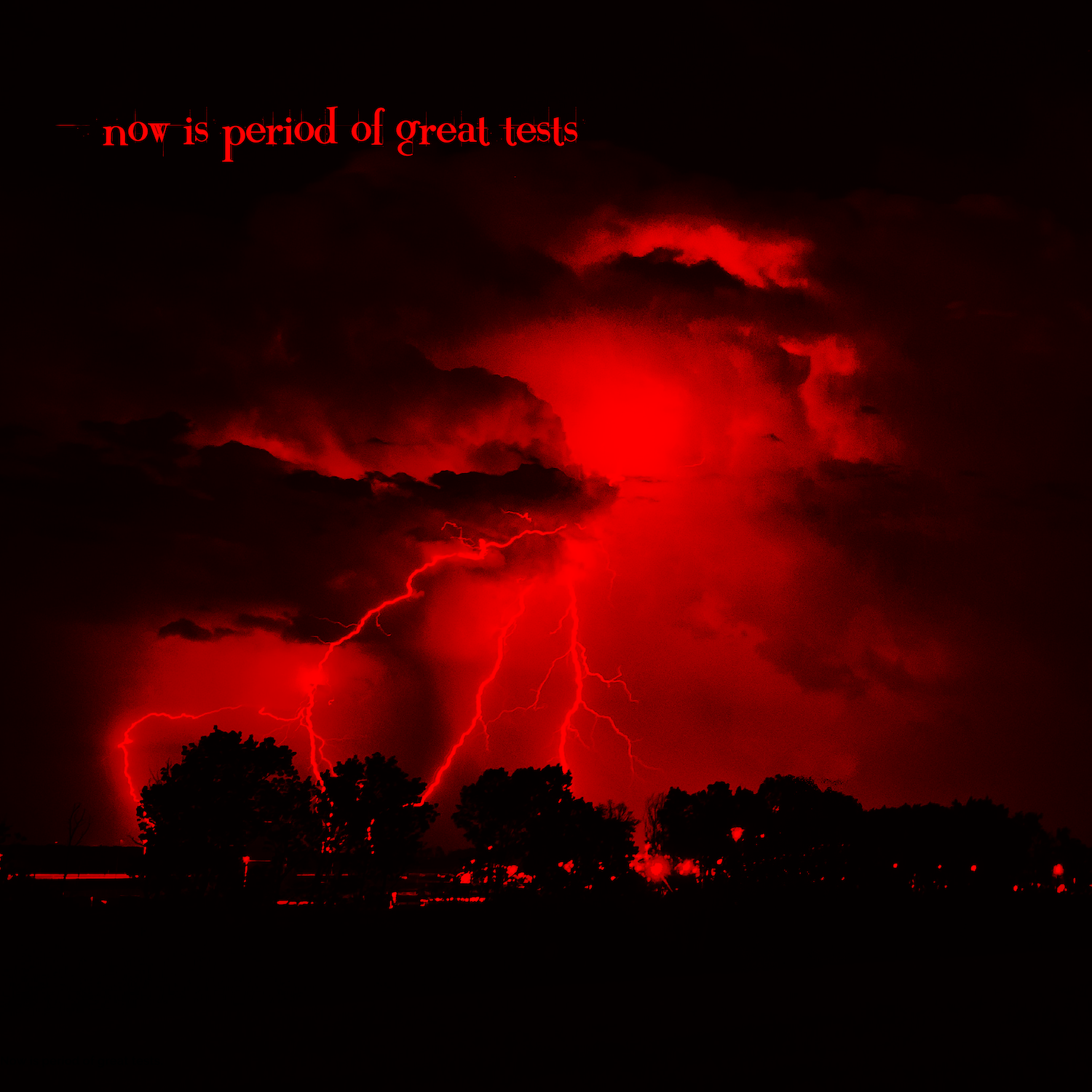
“Gathering Storm.” Original photo: Photo by Max LaRochelle on Unsplash.
The Covenant-breakers intensified their activities in the Holy Land and abroad, using the media to propagate their claims.
Two weeks after the Ascension of 'Abdu'l-Bahá, on 14 December 1921, Bahíyyih Khánum warned the Bahá'ís of the United States against the intrigues of the Covenant-breakers who were very active in that country:
Now is period of great tests. The friends should be firm and united in defending the Cause. Nakeseens [Covenant-breakers] starting activities through press other channels all over world. Select committee of wise cool heads to handle press propaganda in America.
During this period of anxiety, the letters and cables of the Greatest Holy Leaf to the worldwide Bahá'í community were lifelines for them. She was the only point of contact between the Bahá'ís in the Holy Land and the Bahá'ís in the rest of the world.
The Greatest Holy Leaf was the only source of authoritative and immediate guidance for grieving and confused believers, and she reassured a reeling Bahá'í community the world over.

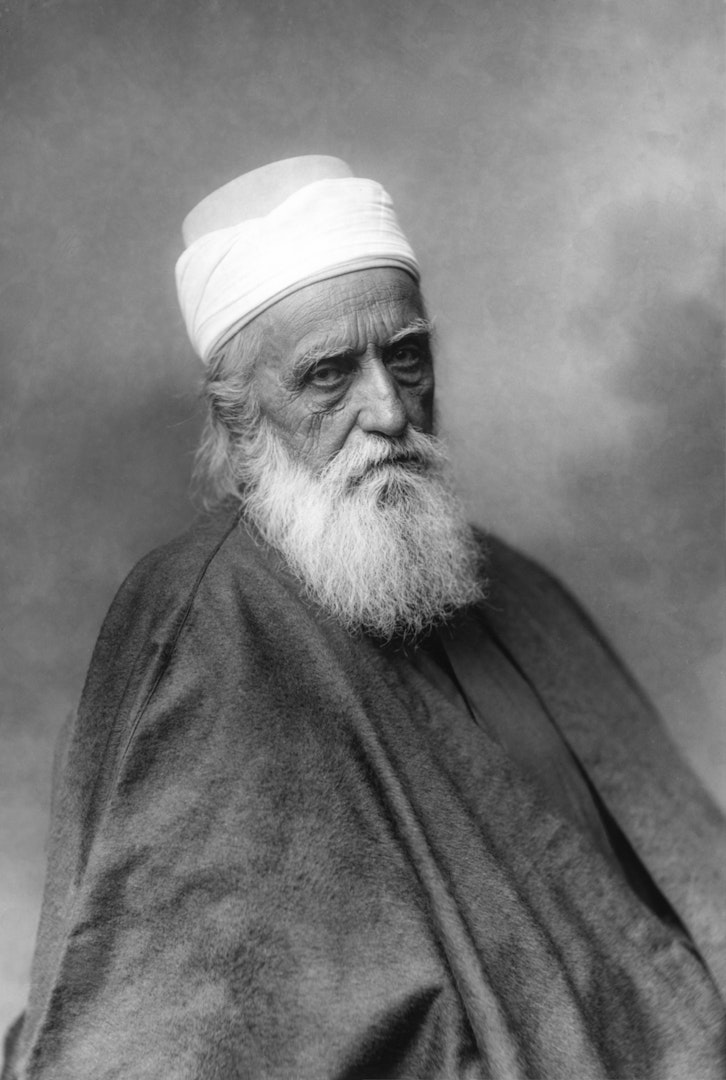
Portrait of ‘Abdu’l-Bahá taken in Paris, France, October 1911. Source: Bahá'í Media Bank, © Bahá'í International Community 2024.
On December 21, 1921, the Greatest Holy Leaf sent cables to both the Persian and the American Bahá'í communities with a message for the Bahá'ís of the world:
Memorial meeting world over January seven. Procure prayers for unity and steadfastness. Master left full instructions in His Will and Testament. Translation will be sent. Inform friends.
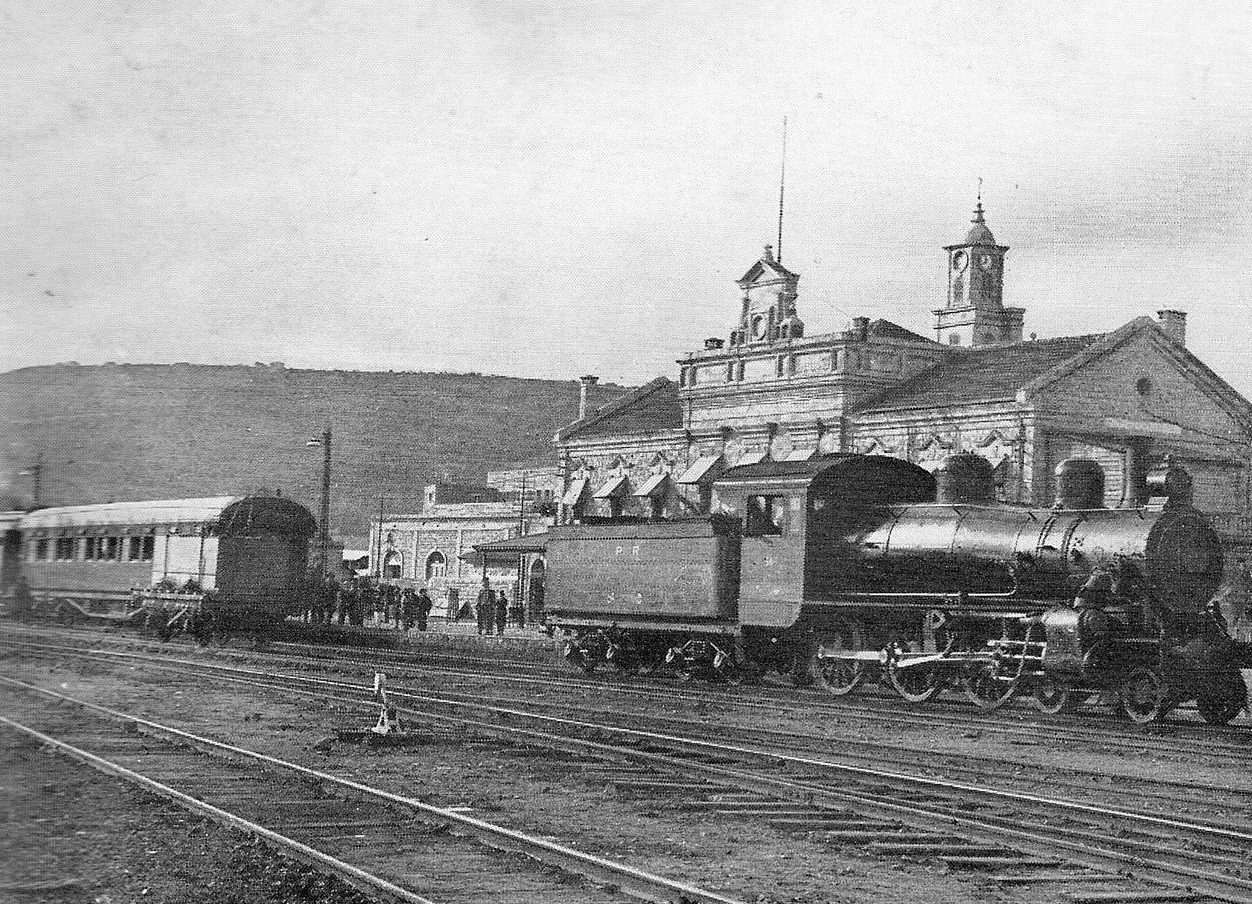
East Haifa train station in 1931. Source: Wikimedia Commons.
After sailing from England with his sister and Lady Blomfield on 16 December 1921, Shoghi Effendi arrived in Haifa by train from Egypt at 5:20 PM on 29 December 1921, exactly one month after the Ascension of 'Abdu'l-Bahá, where he was welcomed by many Bahá'í friends.
The agony of bereavement had taken its toll on Shoghi Effendi and he was broken by grief, so frail that he had to be helped up the stairs of the Master's house upon his arrival.
Louise Bosch was in the tea room of the Master’s House alone, at the time everyone—the Holy Family and the Bahá'ís— was expecting Shoghi Effendi to arrive at any minute. Suddenly, Louise heard footsteps. It was Shoghi Effendi coming in, and as he entered, he gave out a loud, indescribable cry of the greatest grief, the greatest pain, the greatest ache.
Inside 'Abdu'l-Bahá’s home, was the only person in the world who could in any way comfort Shoghi Effendi: his beloved great-aunt, the sister of 'Abdu'l-Bahá. Bahíyyih Khánum, the Greatest Holy Leaf, so slight in appearance and so modest in character, had been the rock of the whole family in the month since 'Abdu'l-Bahá’s passing.
Shoghi Effendi was so devastated by ‘Abdu'l-Bahá's absence from His home that he was confined to bed for several days.
Upon arriving in Haifa, Shoghi Effendi first stayed in his old room, right next to 'Abdu'l-Bahá’s, now empty bedroom, but he was soon moved to a room in the house of his aunt Rúḥá Khánum while the Greatest Holy Leaf had two rooms and a bath built for him on the roof of the Master’s home.
For the first three days of his arrival in Haifa, 29, 30, and 31 December, the Greatest Holy Leaf did not show Shoghi Effendi the Will and Testament, but she could wait no longer.
Shoghi Effendi had to know.
The Faith needed its Guardian.
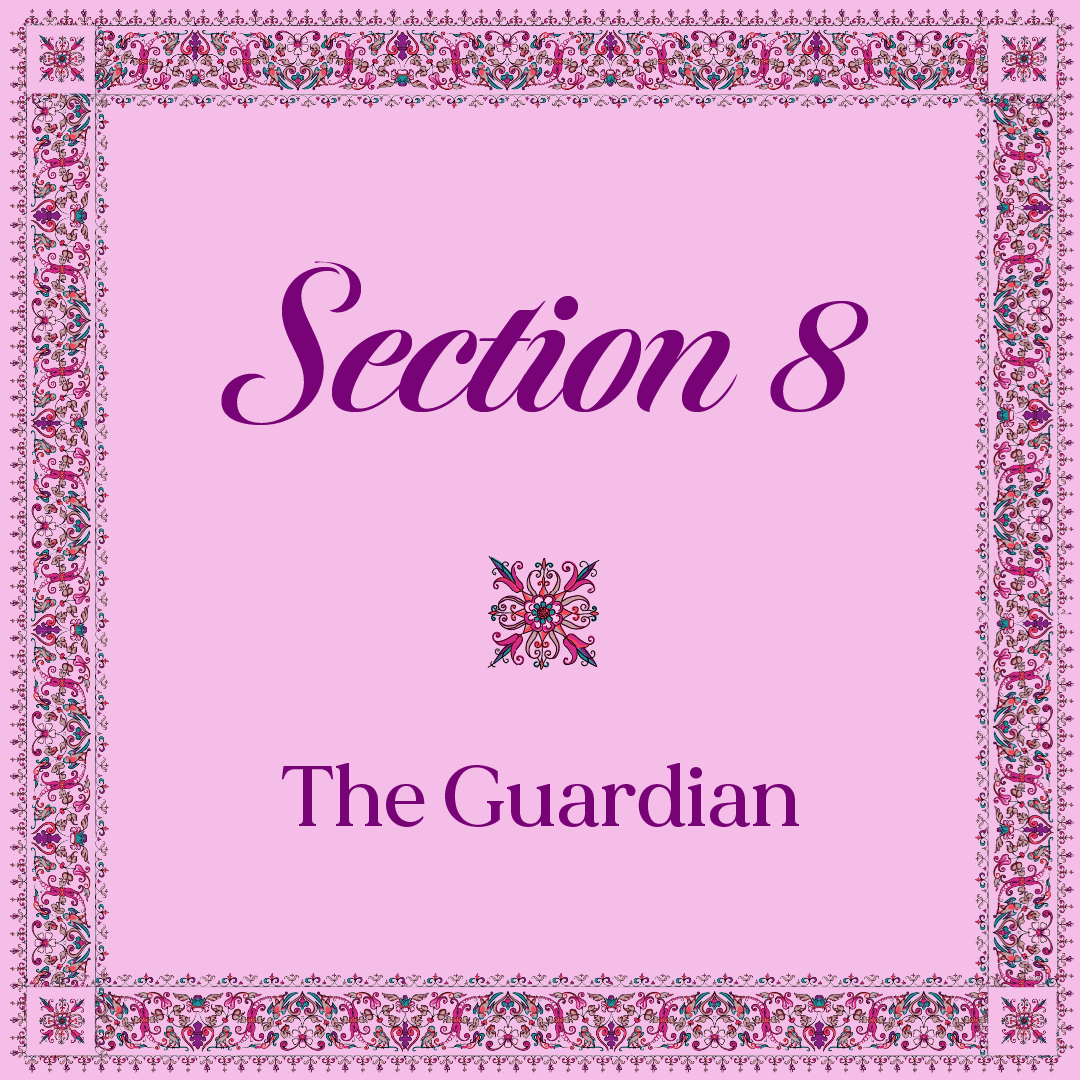
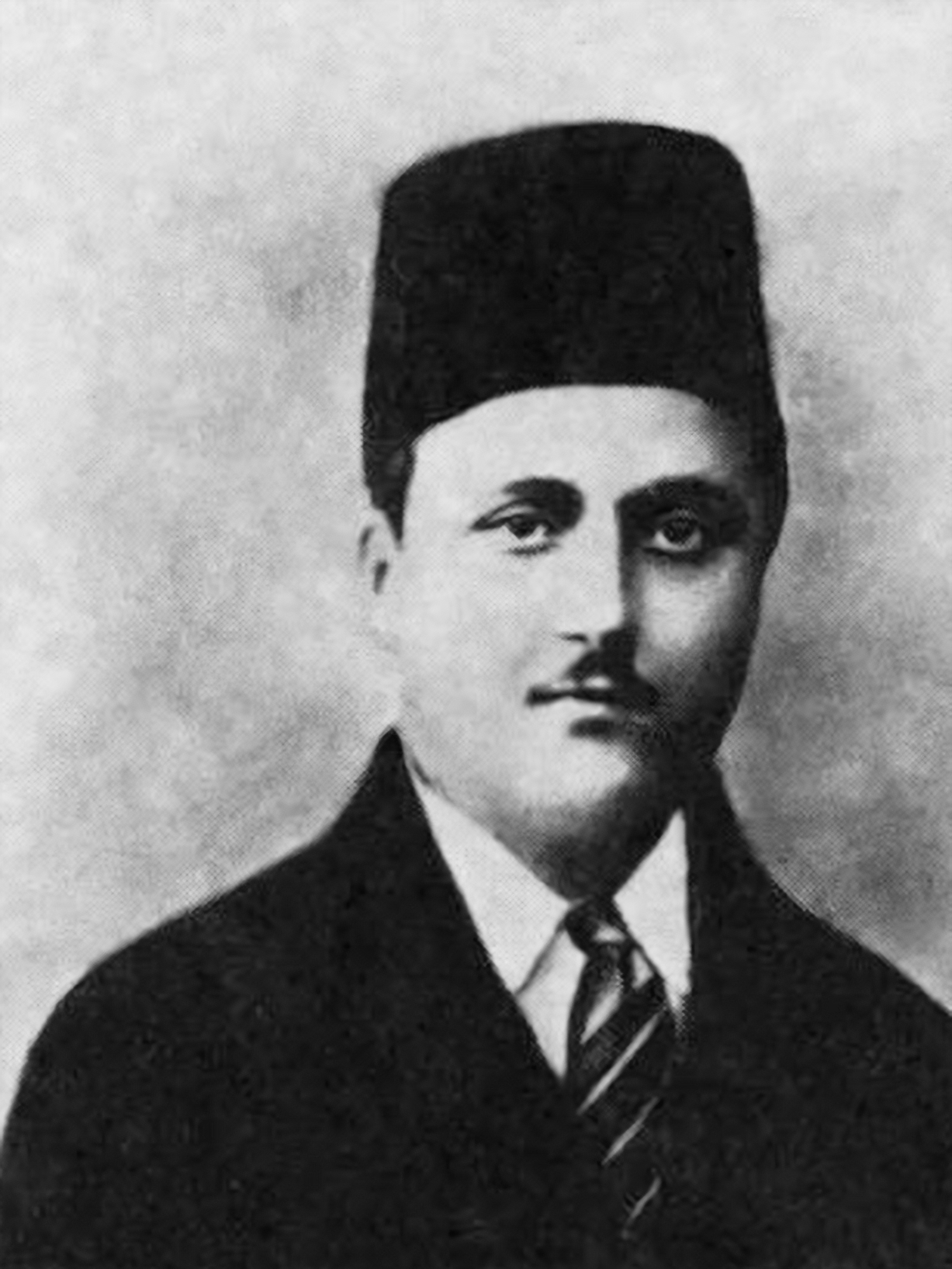
Shoghi Effendi is now and forevermore the Guardian. Source: Blessings Beyond Measure, ‘Alí Yazdí, page 92.
‘Abdu'l-Bahá's Will and Testament was first read to Shoghi Effendi in the days following his arrival in the Holy Land.
Shoghi Effendi had known upon leaving England that ‘Abdu'l-Bahá had left a letter for him in Haifa, but he had no inkling of the contents of that letter and therefore had absolutely no knowledge of the contents of ‘Abdu'l-Bahá's Will, naming him as His successor.
The appointment came to Shoghi Effendi as a great shock.
‘Abdu'l-Bahá had known about Shoghi Effendi's destiny since his birth and had written His Will and Testament in three parts during the perilous years of 1906 to 1908 when Shoghi Effendi was between 9 and 11 years old.
But to Shoghi Effendi, learning of this tremendous responsibility instantly changed him, for he knew, more than anyone, what the burden entailed which had rested on the shoulders of the Báb, Bahá'u'lláh, ‘Abdu'l-Bahá, and now his own.
In perhaps one of the most poignant sentences of "The Priceless Pearl," Hand of the Cause Amatu’l-Bahá Rúḥíyyih Khánum recalled Shoghi Effendi telling her:
The day they read me the will and Testament, I ceased to be a normal human being.
Shoghi Effendi was now the Guardian of the Bahá'í Faith, and ‘Abdu'l-Bahá's Will and Testament must now be read publicly.
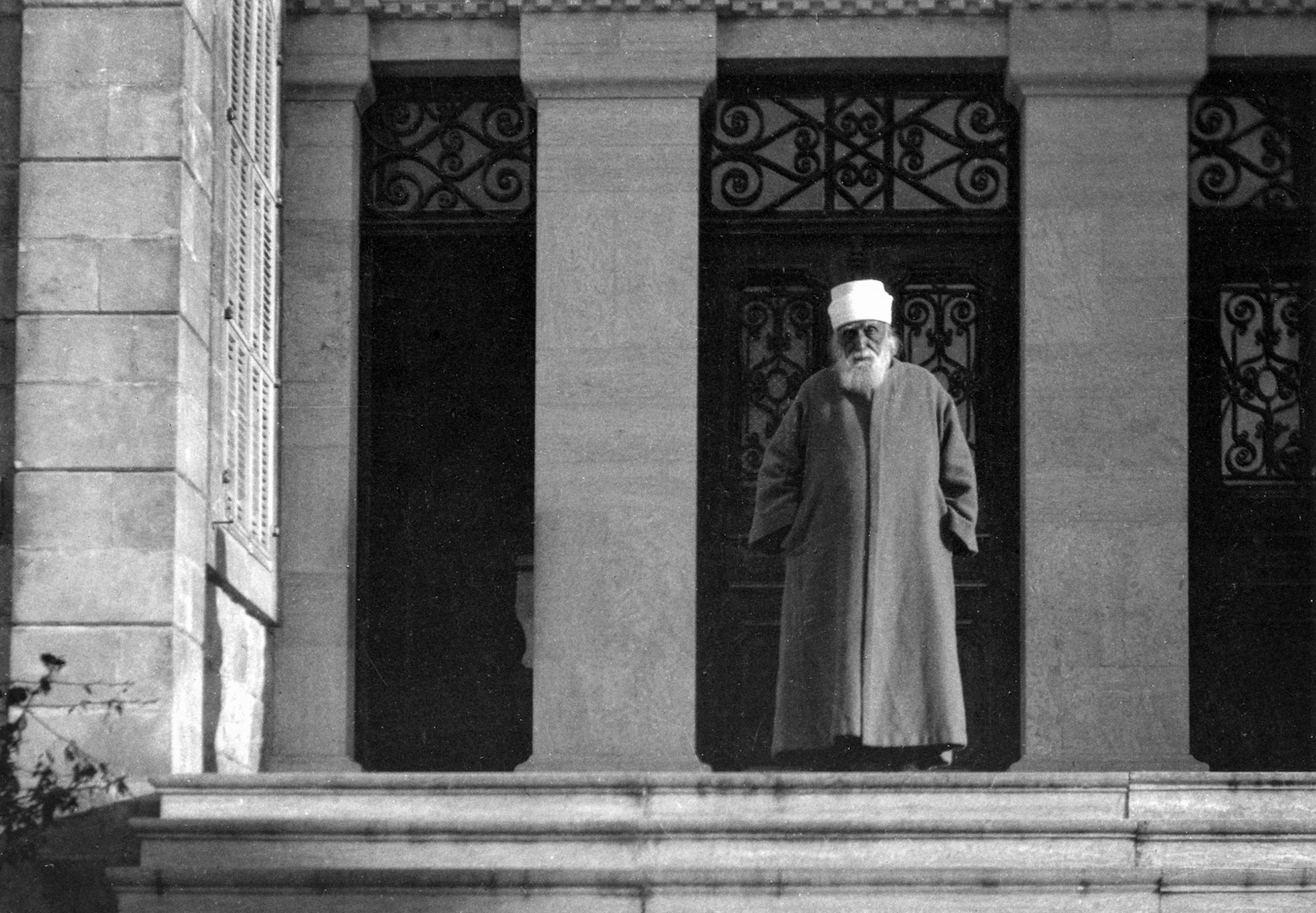
'Abdu'l-Bahá on the steps of His home at 7 Haparsim Street. Source: Bahá'í Media Bank, © Bahá'í International Community 2024.
On the morning of January 3, 1922, Shoghi Effendi visited the Shrine of the Báb and the Tomb of 'Abdu'l-Bahá.
Later the same day, at the House of the Master, ‘Abdu'l-Bahá's Will and Testament was read aloud to nine men, most of whom were members of the family of ‘Abdu'l-Bahá.
These men witnessed ‘Abdu'l-Bahá's own handwriting, His seals, and His signatures throughout the three documents that composed His Will and Testament.
At Shoghi Effendi's request, a true copy of ‘Abdu'l-Bahá's Will and Testament was made by one of the men present, a Persian Bahá'í.
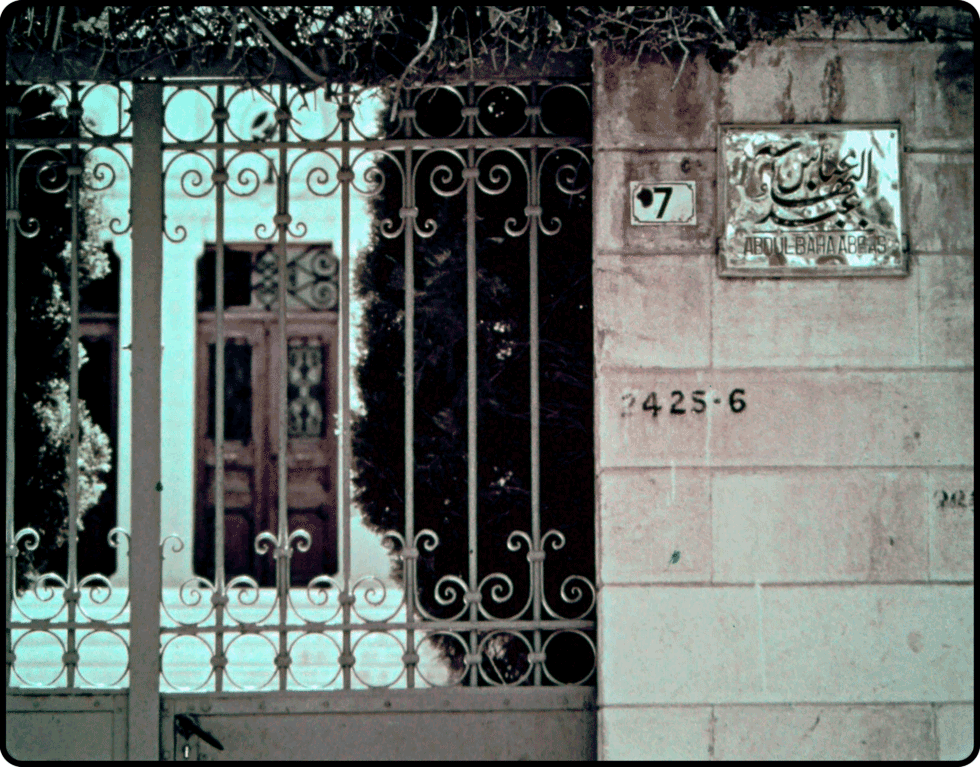
The front gate of the House of the Master, inside of which, in the main central hall, the Will and Testament of 'Abdu'l-Bahá is read for a second time. Source: Bahaimedia.
The Will and Testament of ‘Abdu'l-Bahá was read a second time publicly, after the speeches and tributes in honor of ‘Abdu'l-Bahá at the fortieth-day Memorial Feast.
The guests of the memorial feast were eager to hear from Shoghi Effendi himself, and one of the Bahá'í friends carried a message to the Guardian to this effect.
Shoghi Effendi was with the Greatest Holy Leaf, in her room, and when he receives the message, said he is too distressed and overcome to address the guests and instead, penned a message to be read on his behalf, which began with the following words:
The shock has been too sudden and grievous for my youthful age to enable me to be present at this gathering of the loved ones of beloved 'Abdu'l-Bahá.
Shoghi Effendi then expressed the heartfelt gratitude of himself and ‘Abdu'l-Bahá's family's for the presence of the Governor and the speakers who, by their sincere words:
…have revived his sacred memory in our hearts... I venture to hope that we his kindred and his family may by our deeds and words, prove worthy of the glorious example he has set before us and thereby earn your esteem and your affection.
May His everlasting spirit be with us all and knit us together for evermore!
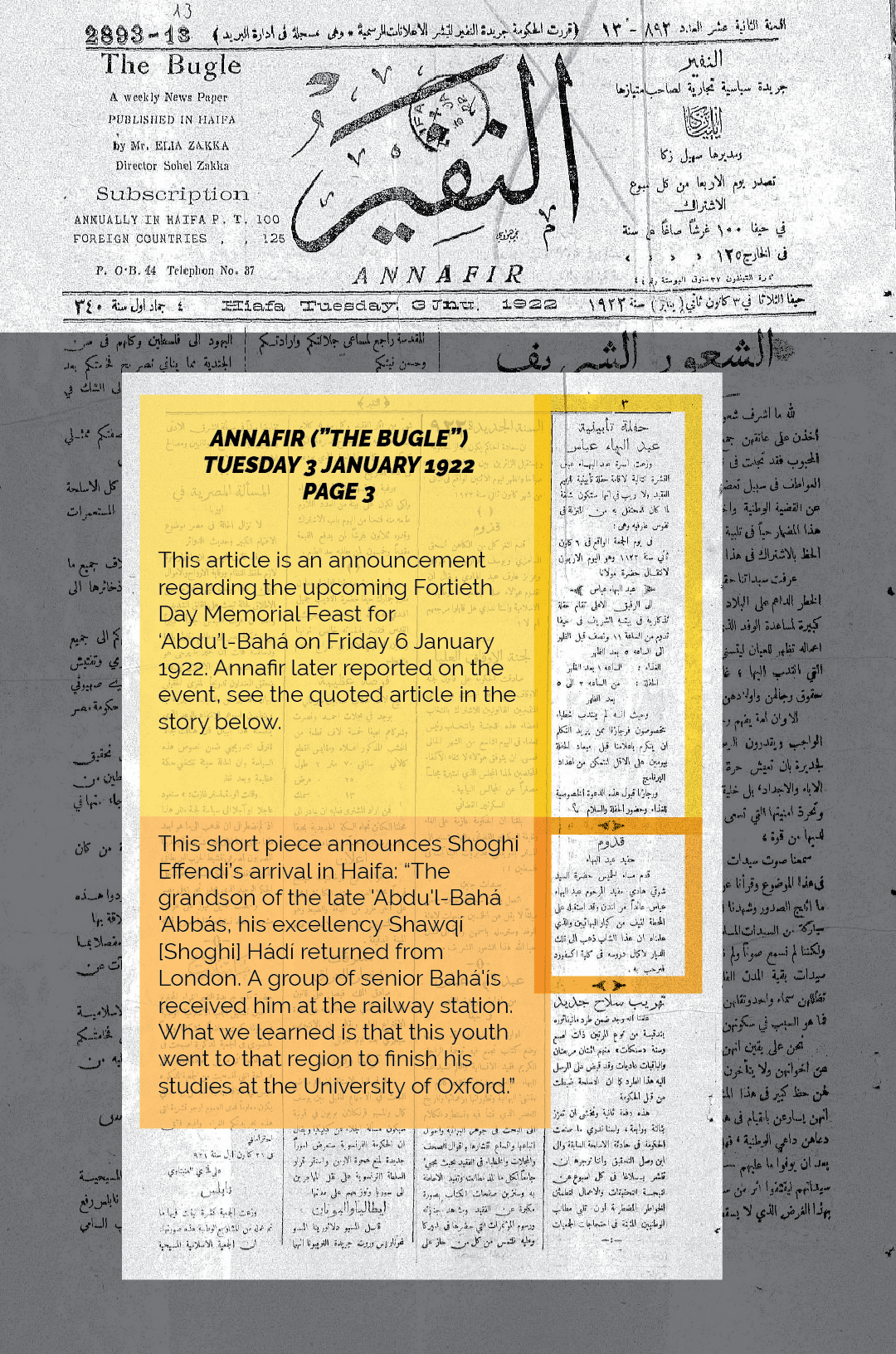
Tuesday 3 January 1922 Annafir ("The Bugle") article regarding the upcoming Friday 6 January 1922 Fortieth Day Memorial Feast for 'Abdu'l-Bahá. The article and the information contained in this graphic are both courtesy of Dr. Necati Alkan, an independent scholar with expertise about late Ottoman history and special focus on the Baha'i Faith. Annafir published an article about the Memorial Feast after it had taken place, and this article is quoted in the story below.
In accordance with Eastern tradition, an impressive memorial feast was held in ‘Abdu'l-Bahá's memory on the fortieth day after His passing, Friday 6 January 1922 at 1:00 PM.
Six hundred and fifty people from Haifa, 'Akká, neighbouring towns, and as far away as Syria, Lebanon and Egypt, headed by the Governor of Phoenicia, the Governor of Haifa, government officials, foreign consuls, prominent poets and scholars, Muslims, Christians, Jews and Bahá'ís of various nationalities, gathered at the home of ‘Abdu'l-Bahá at 7, Persian street (now Haparsim).
Annafir ("The Bugle"), a Haifa newspaper enthusiastically reported:
Neither in Haifa nor in any other Oriental city has there ever been such an impressive service.
The members of the Master's household had arranged a perfectly prepared dinner for the more than 600 guests at the banquet, but also 150 of the poor of Haifa, gathered in a special banquet of their own.
The long banquet tables were decorated with trailing branches of bougainvillea, vibrant purple tropical flowers, mingling with white narcissus and large dishes filled with golden oranges from the Master's own garden.
Each and every guest received the very same, warm welcome into the Master's house.
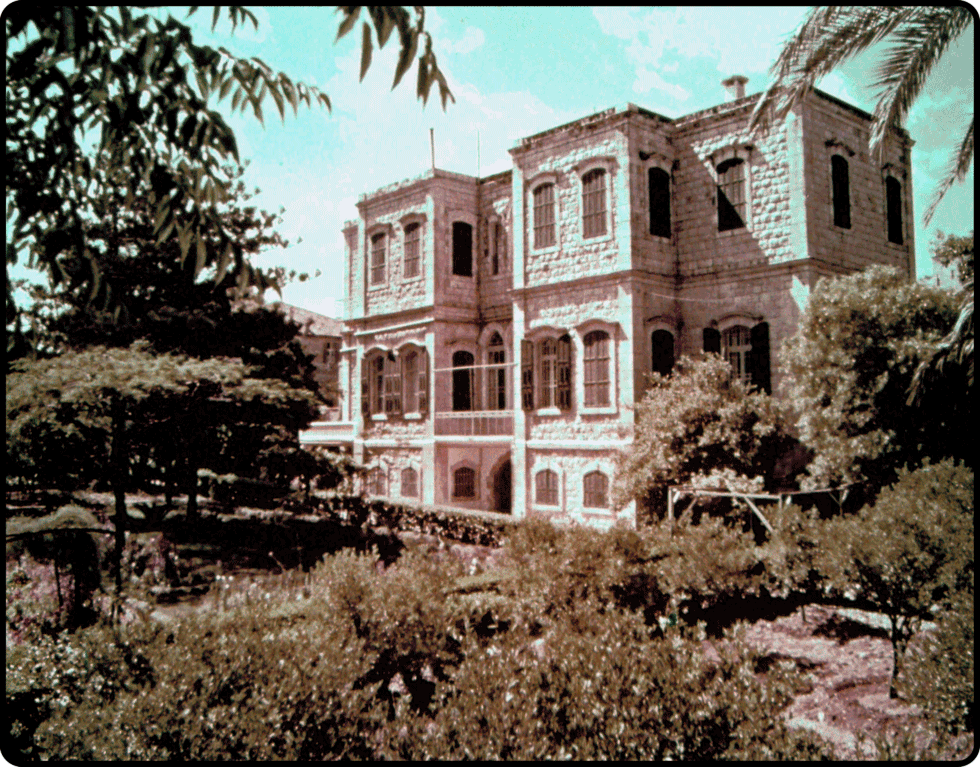
The House of 'Abdu'l-Bahá, seen from the garden at the back. Source: Bahaimedia.
On 7 January 7, 1922, in the Master's house, the day after the Memorial Feast, ‘Abdu'l-Bahá's Will and Testament was read once again in its entirety, but this time, to an audience composed entirely of Bahá'ís, the intended recipients of the weighty injunctions and provisions.
The assembled Bahá'ís hailed from Persia, India, Egypt, England, Italy, Germany, America, and Japan.
Shoghi Effendi was not present during this reading, as was his custom, but everyone in the audience rose every time his name was mentioned in the Will, as a show of respect.
To those assembled, it was clear that the responsibility of leading the Faith and its affairs had now fallen on the shoulders of Shoghi Effendi, Guardian of the Bahá'í Faith.
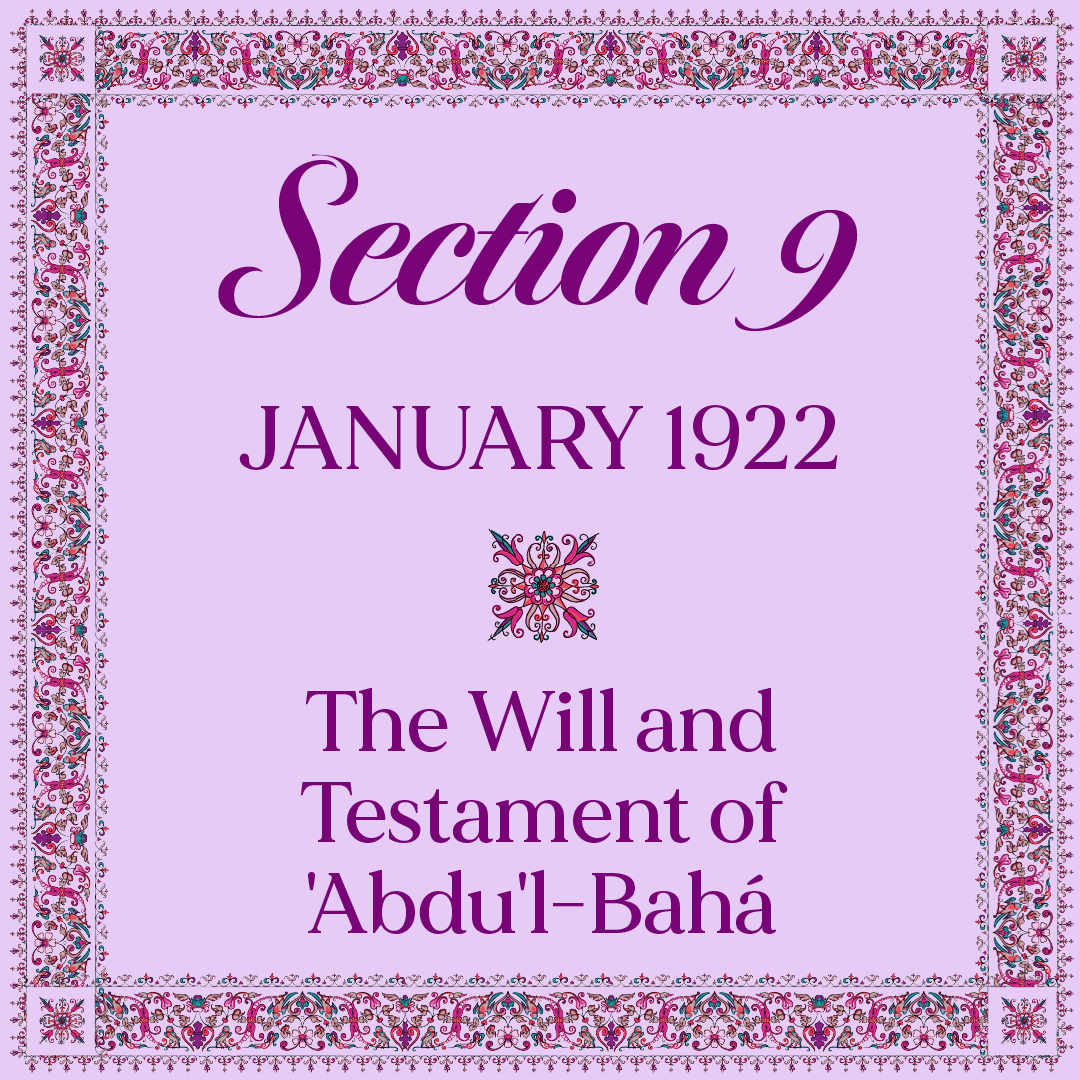
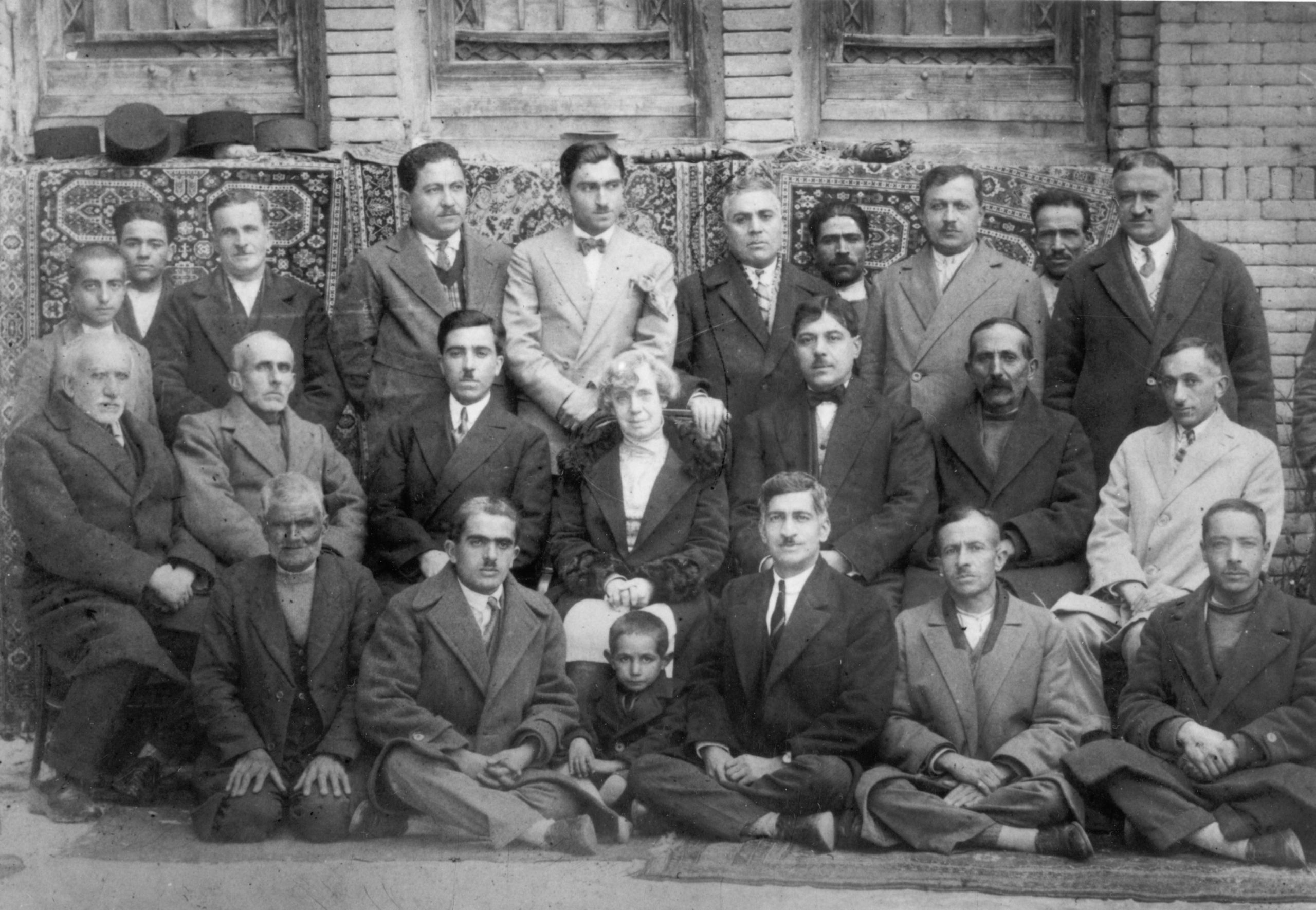
Persian Bahá'ís illustrated by a photograph of Hand of the Cause Martha Root with a group of Bahá’í in Hamadan, Iran, c. 1930. Source: Bahá'í Media Bank, © Bahá'í International Community 2024.
Befittingly, after the third public reading of the Will and Testament of 'Abdu'l-Bahá, it was Bahíyyih Khánum, the Greatest Holy Leaf, and not Shoghi Effendi, who announced to the Bahá'í world the provisions of the ‘Abdu'l-Bahá's Will and Testament.
The Greatest Holy Leaf sent two cables to Persia on January 7, 1922.
The first one read:
Memorial meetings all over the world have been held. The Lord of all the worlds in His Will and Testament has revealed His instructions. Copy will be sent. Inform believers.
and the second read:
Will and Testament forwarded Shoghi Effendi Centre Cause.
Sometime before 'Abdu'l-Bahá’s Ascension, the Spiritual Assembly of Ṭihrán had written to 'Abdu'l-Bahá asking in whose names properties in Persia should be registered to, and the Master had answered, no doubt foreseeing future events:
You have asked in whose name the real estate and buildings donated should be registered with the Government and the legal deeds issued: they should be registered in the name of Mírzá Shoghi Rabbání, who is the son of Mírzá Hádí Shírází and is in London.
This Tablet from 'Abdu'l-Bahá explains in great part why it was no surprise to the Persian believers that Shoghi Effendi had been appointed Guardian of the Faith in the Master’s Will and Testament.
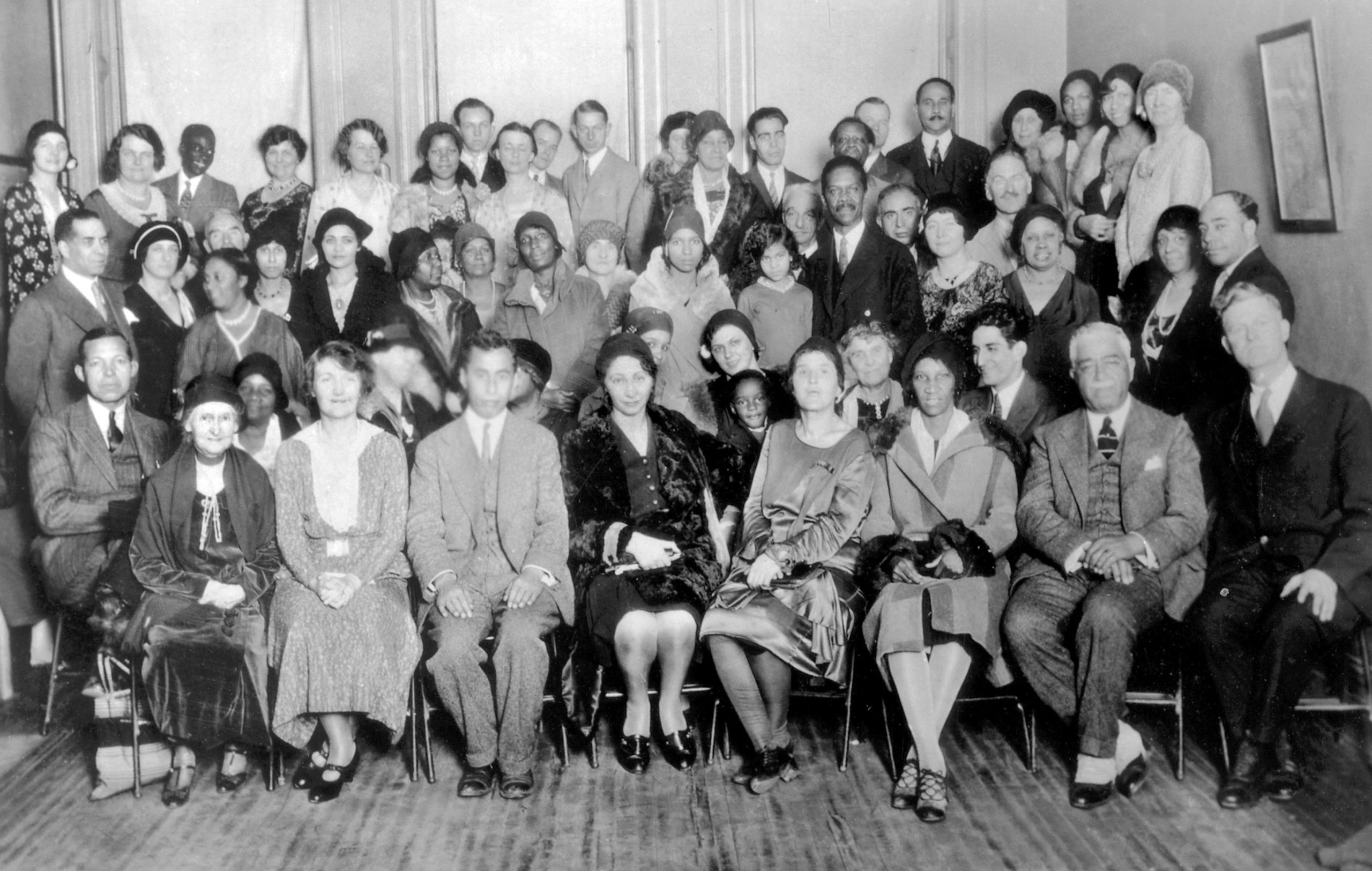
American Bahá'ís illustrated by a race amity meeting held by the New York Bahá’í Assembly and the New York Urban League in New York City in 1930. Source: Bahá'í Media Bank, © Bahá'í International Community 2024.
Nine days after sending the first two cables to the Persian Bahá'ís, on 16 January 1922, the Greatest Holy Leaf sent the following cable to the United States:
In Will Shoghi Effendi appointed Guardian of Cause and Head of House of Justice. Inform American friends.
It was from the pen of the Greatest Holy Leaf that every Bahá'í in the world learned about the new Guardian. These series of three cables sent by Bahíyyih Khánum to the Bahá'í world were a great sign of the coming decade-long collaboration between Shoghi Effendi and Bahíyyih Khánum.
Despite the fact that Shoghi Effendi was, from the very beginning as the Guardian of the Faith, both tactful and masterful in the way he addressed any challenge or problem that arose, for the next ten years, he would have a constant and abiding ally, support, collaborator and loving presence in the Greatest Holy Leaf.
Bahíyyih Khánum’s station, her limpid character, her oceanic love for Shoghi Effendi made her not only his sole earthly support, but also, and more importantly, his refuge.
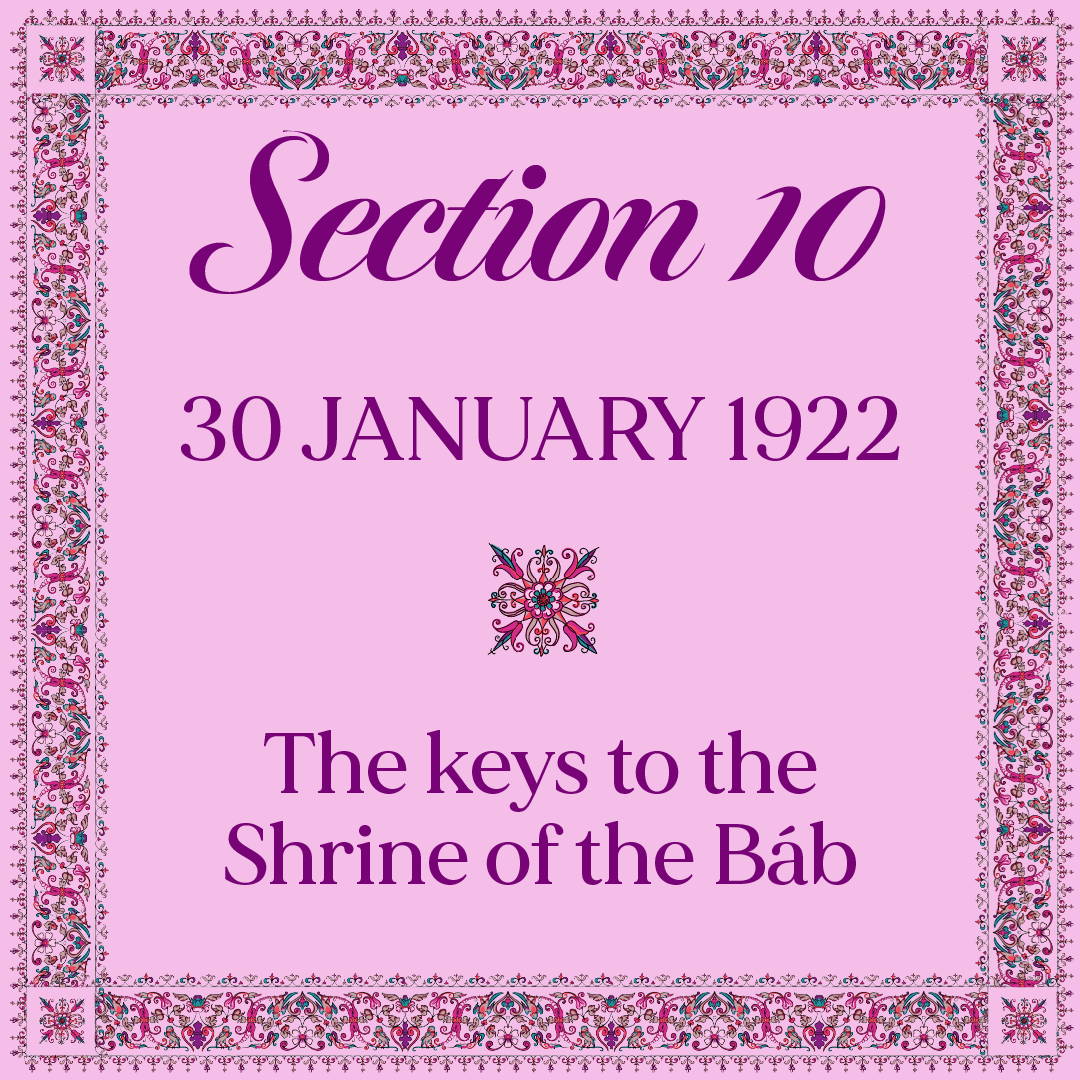

Original image of the Shrine of Bahá'u'lláh in 1919: Bahá'í Media Bank, © Bahá'í International Community 2024.
Mírzá Muḥammad-'Alí began had been actively plotting against the Guardian, and petitioned the civil authorities of Palestine to turn over custodianship of the Shrine of Bahá'u'lláh, stating that he was 'Abdu'l-Bahá’s lawful successor, being His half-brother.
The British authorities refused to act in what they saw was a religious dispute, and when Mírzá Muḥammad-'Alí appealed to the Mufti of 'Akká to intervene on his behalf, the Mufti refused, so he sent his younger brother, Mírzá Badí’u’lláh, along with other Covenant-Breakers to the Shrine of Bahá'u'lláh.
On Tuesday 30 January, the Covenant-breakers stole the keys of the Most Holy Shrine based on their false claim that they were the closest surviving relatives of Bahá'u'lláh. Although they were His sons, they were unfaithful, which forfeited any claim they had.
Their despicable act caused such a commotion in the Bahá'í community that the Governor of 'Akká ordered the keys remanded into the hands of the authorities and refused to return them either to Mírzá Muḥammad-'Alí or to Shoghi Effendi.
No one could enter the Shrine, they could only stand outside of it.
Shoghi Effendi was deeply distressed but he followed 'Abdu'l-Bahá’s example, and, although encompassed by severe tests, he calmly gave instructions as to where to place lights inside and outside the Shrine, which was being electrified at the time, a process that had been started by 'Abdu'l-Bahá in the last months of His life.
There is no doubt that the Covenant-breakers seizing the keys of the Shrine of Bahá'u'lláh would have broken Bahíyyih Khánum’s heart.
This story is resolved in early 1923, in Part XIII.
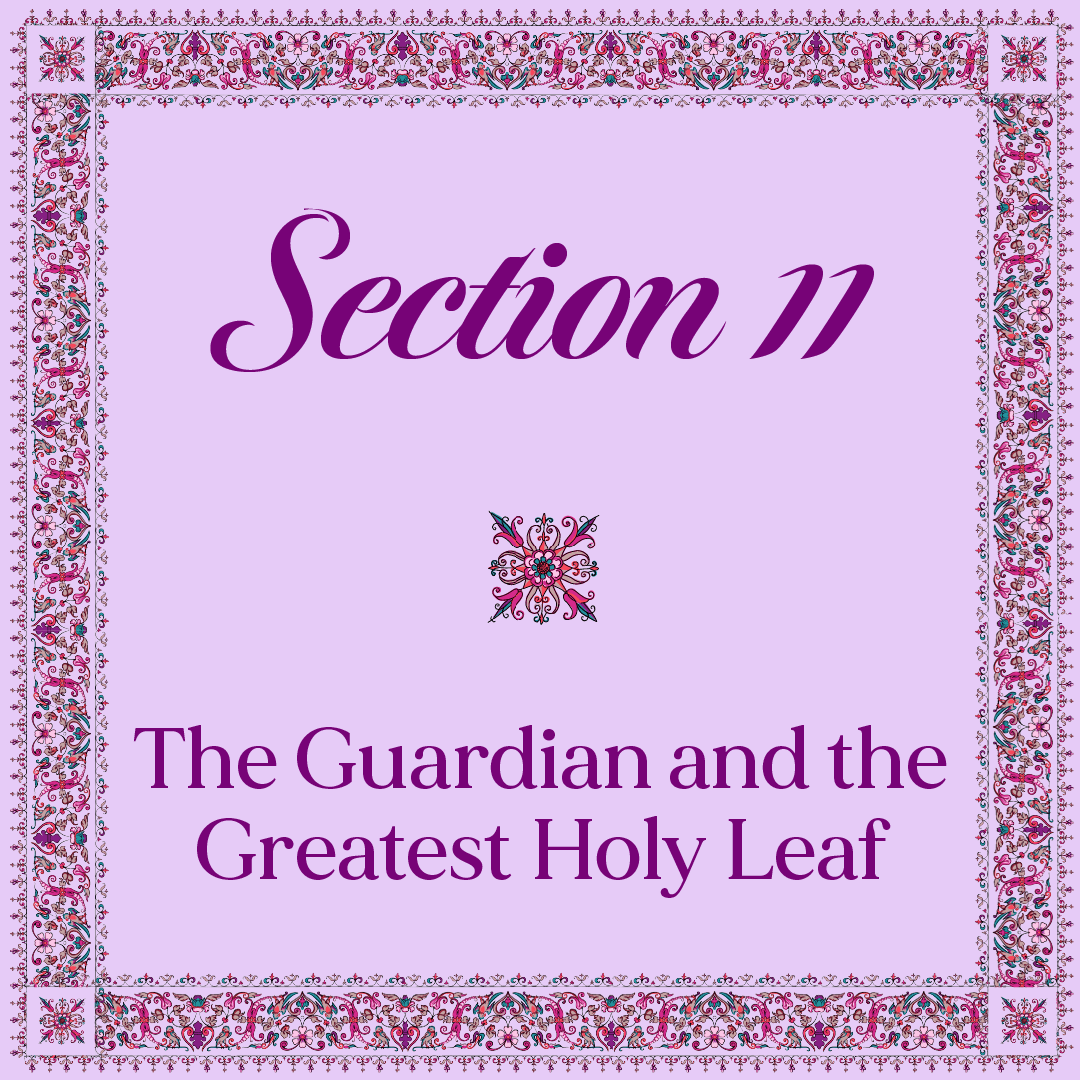
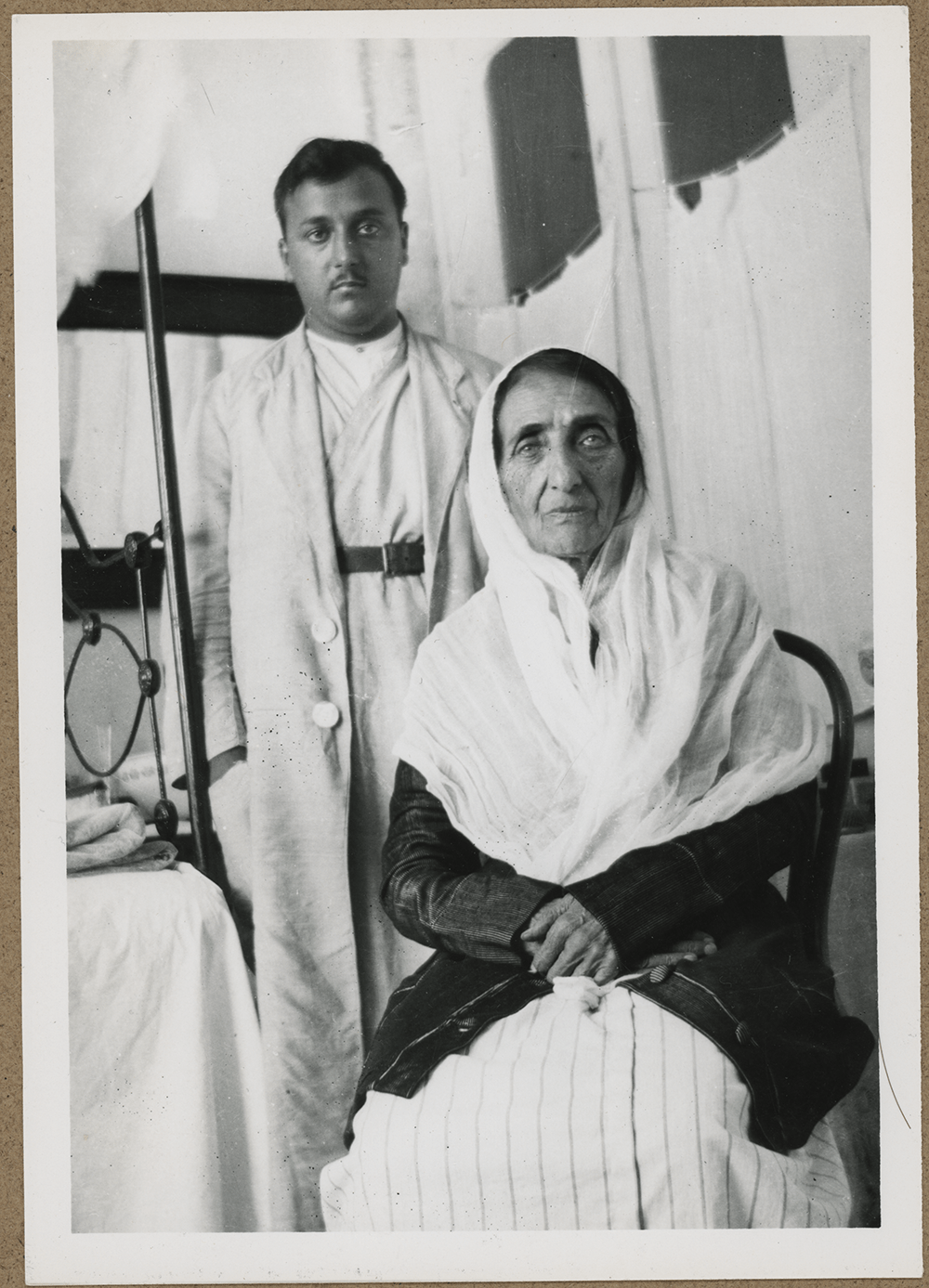
Shoghi Effendi and the Greatest Holy Leaf, a photograph most likely taken between 1918 and 1920 when Shoghi Effendi was the secretary of 'Abdu'l-Bahá in Haifa. © United States National Bahá'í Archives, used with permission.
When Shoghi Effendi became the Guardian, he was 24 years old and the Greatest Holy Leaf was 75.
Shoghi Effendi was beginning his life, and Bahíyyih Khánum was entering old age.
The two most important people in Shoghi Effendi’s life had always been 'Abdu'l-Bahá and Bahíyyih Khánum. Shoghi Effendi had grown up in their protective embrace, and at the age of 24, he had observed for a quarter of a century all the exceptional and precious services she had rendered during the ministry of 'Abdu'l-Bahá.
Shoghi Effendi called her life precious, and, with gratitude and love described her role in his life to that of chief sustainer most affectionate comforter, and the joy and inspiration of his life. Shoghi Effendi also describes Bahíyyih Khánum’s heavenly qualities and the ocean of her endless favour and grace.
Shoghi Effendi, as a student of history, was painfully aware of the tendency of historians and history books to minimize the contribution of women in profoundly shaping historical events.
For the rest of his life, he would never cease to present the Greatest Holy Leaf in her true light, pay her homage for her countless and crucial services to the Faith, extoll her unparalleled station in Bahá'í history and present to the world the vast array of her perfections and spiritual qualities.
The Guardian would later state that Bahíyyih Khánum had influenced the course of chief events in Bahá'í history, highlighting her sufferings, sacrifices, and her rare gift of sympathy.
Rúḥíyyih Khánum described the strength of the bond between the Greatest Holy Leaf and the Guardian:
This love the Guardian had for the Greatest Holy Leaf, who had watched over him for thirty-five years as far more than a mother, continued to be demonstrated for the remainder of his life.
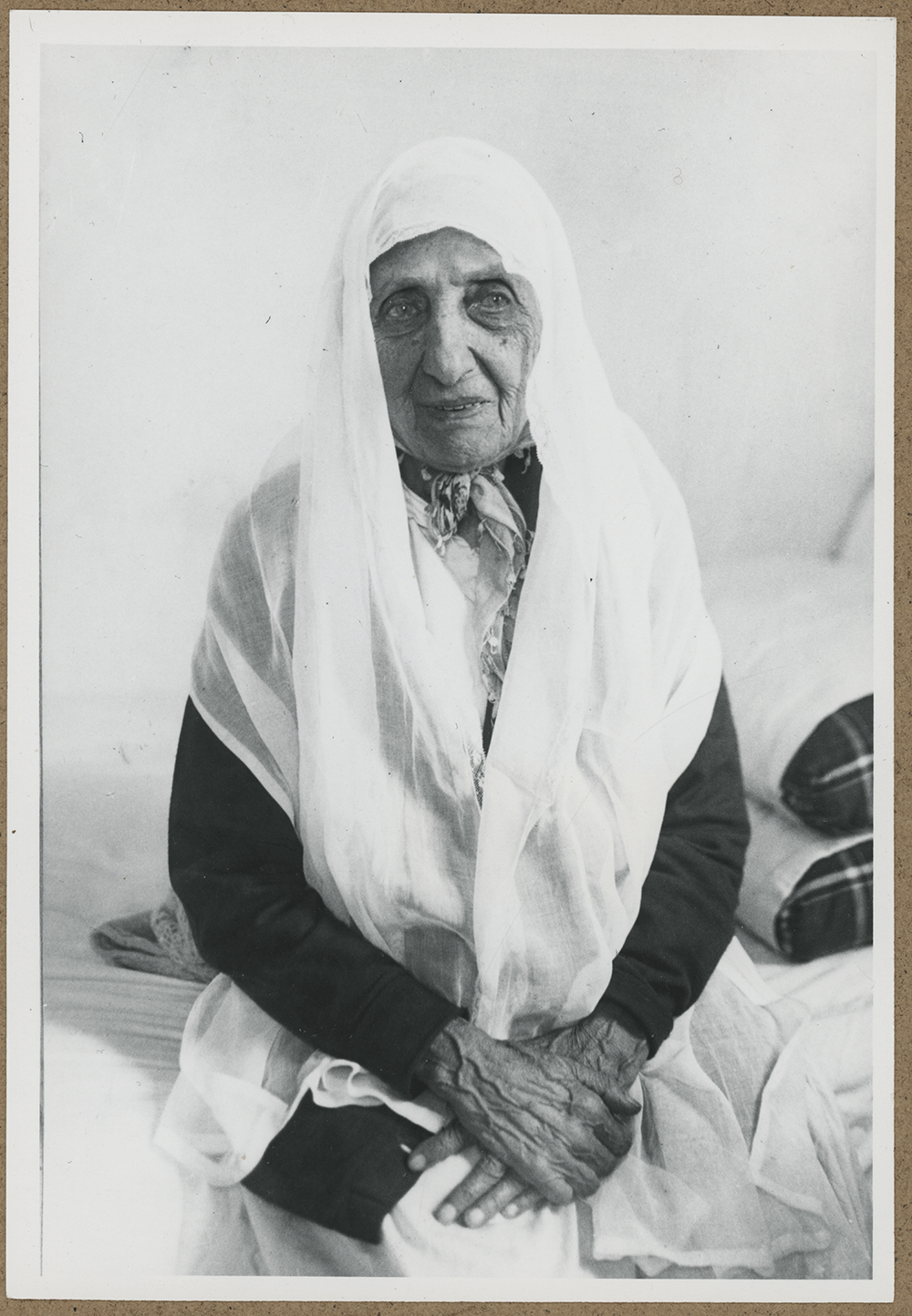
Last photograph of the Greatest Holy Leaf taken by Effie Baker in 1931. © United States National Bahá'í Archives, used with permission.
Shoghi Effendi’s love was fully returned by Bahíyyih Khánum.
In the early days, weeks, months, and years of his Guardianship, Shoghi Effendi depended upon the Greatest Holy Leaf’s encouragement and strength:
After the ascension of ‘Abdu’l-Bahá to the realm of the All-Glorious, that Light of the Concourse on High enfolded me, helpless as I was, in the embrace of her love, and with incomparable pity and tenderness, persuaded, guided, and urged me on to the requirements of servitude. The very elements of this frail being were leavened with her love, refreshed by her companionship, sustained by her eternal spirit.
The Greatest Holy Leaf saw in Shoghi Effendi the fulfilment of 'Abdu'l-Bahá’s highest aspirations and hopes, and the complete assurance that the Faith of Bahá'u'lláh was in the most capable hands. She saw Shoghi Effendi, then a young man as a worthy and capable leader, who would move the Faith of Bahá'u'lláh towards its destiny.
After the Ascension of 'Abdu'l-Bahá, Bahíyyih Khánum would devote the last 11 years of her life to completely serve, aid, and support Shoghi Effendi, the Guardian of the Cause.
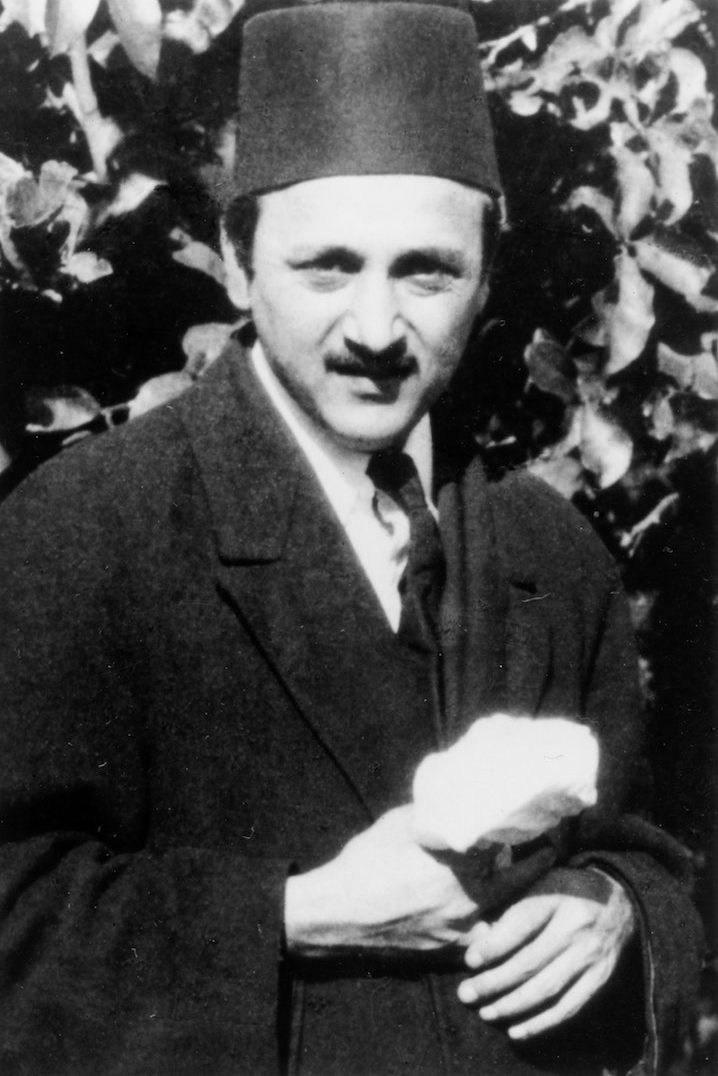
One of the first photographs of Shoghi Effendi as Guardian of the Bahá'í Faith, taken in early 1922. Source: Bahá'í Media Bank, © Bahá'í International Community 2024.
The photograph above is one of the earliest photograph of Shoghi Effendi as Guardian of the Faith, and this is the story of how it came to be.
One day in early 1922, Shoghi Effendi walked back to the House of the Master from a visit to the Shrine of the Báb, followed by some Bahá'ís.
When he arrived at the house, Shoghi Effendi invited Boyce Nourse, a young pilgrim in Haifa with his family, to stroll through the garden with him.
Boyce asked Shoghi Effendi if he could take his photograph, and, surprisingly, Shoghi Effendi agreed.
The photograph shows Shoghi Effendi standing in the garden of 'Abdu'l-Bahá’s home, holding a handkerchief filled violets he had picked at the Shrine of the Báb, and which he was bringing back for his beloved great-aunt, the Greatest Holy Leaf.
On that occasion, Shoghi Effendi had also picked a second bouquet of violets which he asked Boyce’s mother, Elizabeth Nourse to bring back with her to America.
Those violets were Shoghi Effendi’s first gift to America.
They were preserved and later offered to the United States National Archives.
SOURCES FOR PART IX
Statements by ‘Abdu’l-Bahá referring to the end of His earthly life
God Passes By, Shoghi Effendi.
20 – 28 November 1921: The week before the Ascension of ‘Abdu’l-Bahá
Violetta Zein, The Extraordinary Life of ‘Abdu’l-Bahá Part IX: The Ascension of ‘Abdu’l-Bahá (28 November 1921).
Monday 28 November 1921 at 1:15 AM: The Ascension of ‘Abdu’l-Bahá
Violetta Zein, The Extraordinary Life of ‘Abdu’l-Bahá Part IX: The Ascension of ‘Abdu’l-Bahá (28 November 1921).
Monday 28 November 1921 (but received Tuesday 29 November 1921): The Greatest Holy Leaf’s cablegram
Violetta Zein, The Extraordinary Life of ‘Abdu’l-Bahá Part IX: The Ascension of ‘Abdu’l-Bahá (28 November 1921).
Monday 28 November 1921: Bahíyyih Khánum comforts the local Bahá’í community
Prophet’s Daughter: The Life and Legacy of Bahíyyih Khánum, Outstanding Heroine of the Bahá’í Faith, Janet A. Khan, Bahá’í Publishing Trust, Wilmette, 2005, pages 109-110.
Prophet’s Daughter: The Life and Legacy of Bahíyyih Khánum, Outstanding Heroine of the Bahá’í Faith, Janet A. Khan, Bahá’í Publishing Trust, Wilmette, 2005, pages 109-110.
Monday 28 November 1921: How ‘Abdu’l-Bahá’s burial spot was chosen
Violetta Zein, The Extraordinary Life of ‘Abdu’l-Bahá Part IX: The Ascension of ‘Abdu’l-Bahá (28 November 1921).
Tuesday 29 November 1921: The Funeral of ‘Abdu’l-Bahá
Shoghi Effendi, God Passes By.
Michael V. Day Journey To A Mountain (The Story of the Shrine of the Bab), pages 89-90.
The Greatest Holy Leaf: Trusted supporter of ‘Abdu’l-Bahá
Leaves of the Twin Divine Trees. Baharieh Rouhani Ma’ani, George Ronald, Oxford, 2013, Kindle Edition, Chapter 7: Bahá’íyyih Khánum, the Most Outstanding Heroine of the Bahá’í Dispensation.
Transcript of The Greatest Holy Leaf, talk by Bahíyyih Nakhjávání, Timestamp: 5:20.
The Priceless Pearl, Rúḥíyyih Rabbání, Bahá’í Publishing Trust, London, 1969, page
Bahá’í Administration, 17 July 1932 letter from Shoghi Effendi regarding the passing of Bahíyyih Khánum to the Bahá’ís of the West.
The impact on Bahíyyih Khánum of ‘Abdu’l-Bahá’s passing
Prophet’s Daughter: The Life and Legacy of Bahíyyih Khánum, Outstanding Heroine of the Bahá’í Faith, Janet A. Khan, Bahá’í Publishing Trust, Wilmette, 2005, page 105 and 108-109.
The broken heart of the Greatest Holy Leaf
Prophet’s Daughter: The Life and Legacy of Bahíyyih Khánum, Outstanding Heroine of the Bahá’í Faith, Janet A. Khan, Bahá’í Publishing Trust, Wilmette, 2005, page 105 and 108-109.
A few days after 29 November 1921: The mourning of the Greatest Holy Leaf
Prophet’s Daughter: The Life and Legacy of Bahíyyih Khánum, Outstanding Heroine of the Bahá’í Faith, Janet A. Khan, Bahá’í Publishing Trust, Wilmette, 2005, pages 113-114.
Shoghi Effendi, God Passes By.
“The Passing of ‘Abdu’l-Baha” by Shoghi Effendi and Lady Blomfield, details from Louis Bosch.
Johanna Hauff’s letters published in Star of the West.
David Merrick’s Passing of ‘Abdu’l-Bahá.
28 November – 29 December 1921: Bahíyyih Khánum’s leadership of the Bahá’í community
Leaves of the Twin Divine Trees, Baharieh Rouhani Ma’ani, George Ronald, Oxford, 2013, pages 180-181.
Leaves of the Twin Divine Trees, Baharieh Rouhani Ma’ani, George Ronald, Oxford, 2013, pages 182-183.
Prophet’s Daughter: The Life and Legacy of Bahíyyih Khánum, Outstanding Heroine of the Bahá’í Faith, Janet A. Khan, Bahá’í Publishing Trust, Wilmette, 2005, page 116-118.
14 December 1921: Now is a period of great tests
Leaves of the Twin Divine Trees, Baharieh Rouhani Ma’ani, George Ronald, Oxford, 2013, pages 182-183.
Prophet’s Daughter: The Life and Legacy of Bahíyyih Khánum, Outstanding Heroine of the Bahá’í Faith, Janet A. Khan, Bahá’í Publishing Trust, Wilmette, 2005, page 116-118.
21 December 1921: The Greatest Holy Leaf announces worldwide memorial gatherings
The Priceless Pearl, Rúhíyyih Rabbání, Bahá’í Publishing Trust, London, 1969, page 44.
29 December 1921: Shoghi Effendi arrives in Haifa
The Priceless Pearl, Rúḥíyyih Rabbání, Bahá’í Publishing Trust, London, 1969, pages 42 and 46.
Dawn Over Mount Hira. Marzieh Gail, George Ronald, 1976, pages 213-214.
Riaz Khadem, Prelude to the Guardianship.
Adib Taherzadeh, The Covenant of Bahá’u’lláh.
9 December 1921: What Shoghi Effendi expected
In the Days of the Guardian: Transcript of a talk by Hand of the Cause of God Leroy Ioas, Johannesburg, South Africa, 1958.
Shoghi Effendi becomes the Guardian
The Priceless Pearl, Rúḥíyyih Rabbání, Bahá’í Publishing Trust, London, 1969, pages 46-47.
Riaz Khadem, Prelude to the Guardianship.
Adib Taherzadeh, The Covenant of Bahá’u’lláh.
3 January 1922: First Reading of ‘Abdu’l-Bahá’s Will and Testament
The Priceless Pearl, Rúḥíyyih Rabbání, Bahá’í Publishing Trust, London, 1969, pages 46-47.
6 January 1922: The second reading of ‘Abdu’l-Bahá’s Will and Testament
The Priceless Pearl, Rúḥíyyih Rabbání, Bahá’í Publishing Trust, London, 1969, pages 46-47.
6 January 1922: Fortieth Day Memorial Feast
Shoghi Effendi and Lady Blomfield The Passing of ‘Abdu’l-Bahá (1922).
Shoghi Effendi, God Passes By, Ruḥíyyíh Khánum The Priceless Pearl.
Article printed in the Haifa newspaper Annafir (“The Bugle”).
Emogene Hoagg, Letter to Nelly French dated 2 January 1922, published in World Order Volume 6 Issue 2 and Jináb-i-Azíz’u’lláh Azízí, A Crown of Glory;
All sources available in full in David Merrick’s Passing of ‘Abdu’l-Bahá.
7 January 1922: The third Reading of ‘Abdu’l-Bahá’s Will and Testament
Michael V. Day Journey To A Mountain (The Story of the Shrine of the Bab), page 91.
7 January 1922: Provisions of the Will and Testament of ‘Abdu’l-Bahá announced to Persian Bahá’ís
The Priceless Pearl, Rúḥíyyih Rabbání, Bahá’í Publishing Trust, London, 1969, pages 47-48.
16 January 1922: Provisions of the Will and Testament of ‘Abdu’l-Bahá announced to American Bahá’ís
The Priceless Pearl, Rúḥíyyih Rabbání, Bahá’í Publishing Trust, London, 1969, pages 47-48.
30 January 1922: Covenant-breakers seize the keys to the Shrine of Bahá’u’lláh
The Priceless Pearl, Rúḥíyyih Rabbání, Bahá’í Publishing Trust, London, 1969, pages 53-54.
The Bábí and the Bahá’í Religions, 1844–1944, Some Contemporary western Accounts. Moojan Momen, George Ronald, Oxford, 1981, pages 456-457.
The Guardian and the Greatest Holy Leaf
Leaves of the Twin Divine Trees, Baharieh Rouhani Ma’ani, George Ronald, Oxford, 2013, page 185.
The Priceless Pearl, Rúḥíyyih Rabbání, Bahá’í Publishing Trust, London, 1969, pages 6-7.
Bahá’í Library Online: Pilgrimage to Haifa and ‘Akká: Parts 2 and 3, (Part 1 missing), Bill Sears, page 4.
The Greatest Holy Leaf and the Guardian
Leaves of the Twin Divine Trees, Baharieh Rouhani Ma’ani, George Ronald, Oxford, 2013, page 185.
The Priceless Pearl, Rúḥíyyih Rabbání, Bahá’í Publishing Trust, London, 1969, pages 6-7.
Bahá’í Library Online: Pilgrimage to Haifa and ‘Akká: Parts 2 and 3, (Part 1 missing), Bill Sears, page 4.
Early 1922: The photograph of the Guardian
Shoghi Effendi Through the Pilgrim’s Eye Volume 1 Building the Administrative Order, 1922-1952. Earl Redman, George Ronald, Oxford, 2015, Kindle Edition, Location 768.
![]()
 Statements by ‘Abdu'l-Bahá referring to the end of His earthly life
Statements by ‘Abdu'l-Bahá referring to the end of His earthly life

